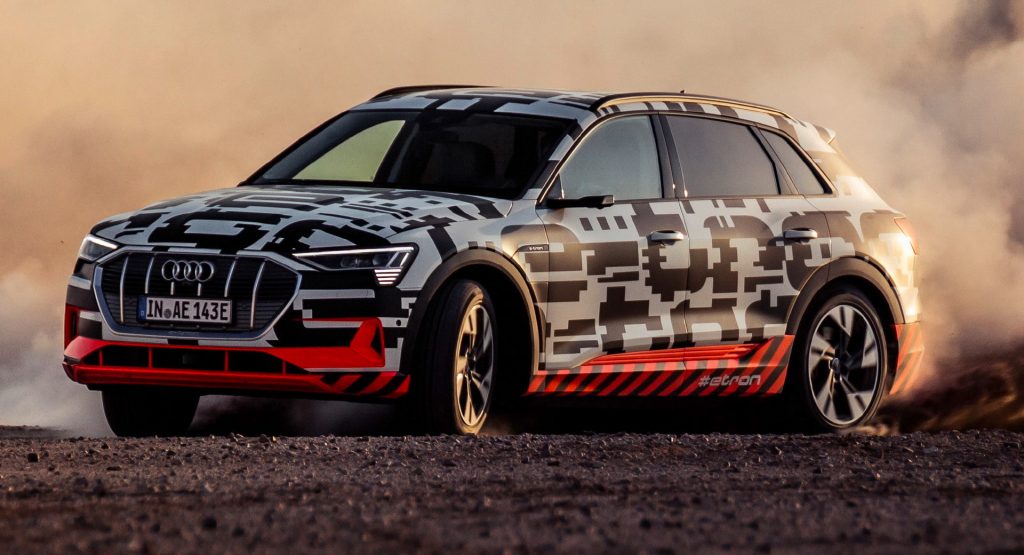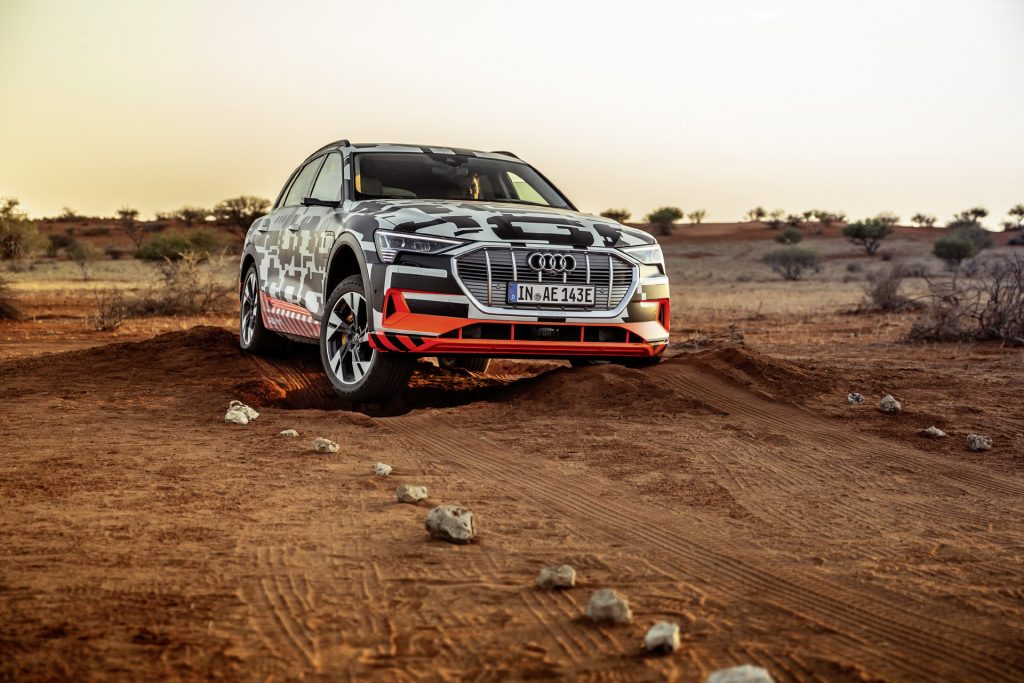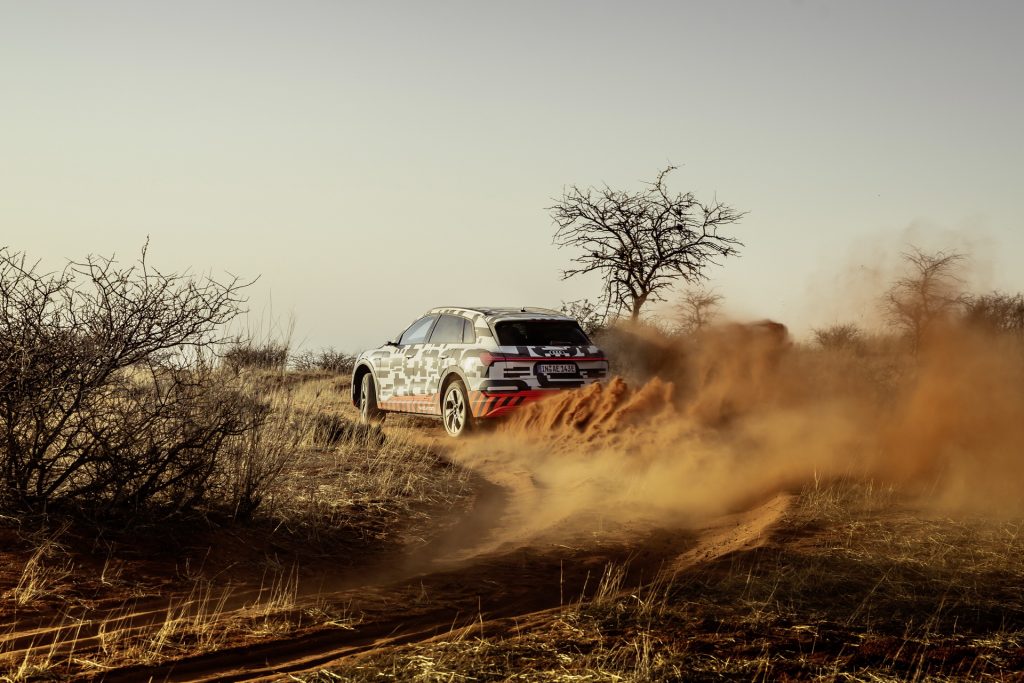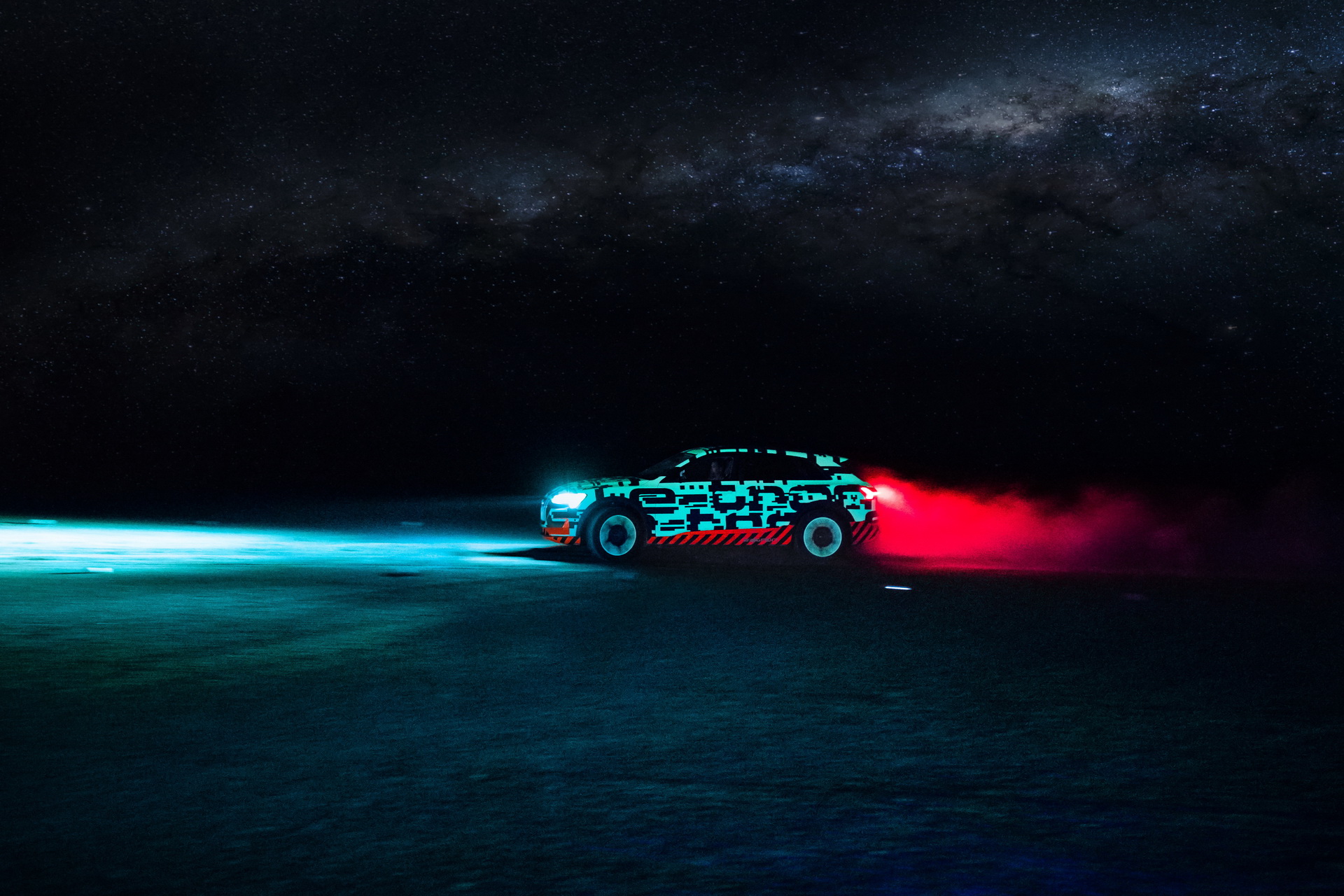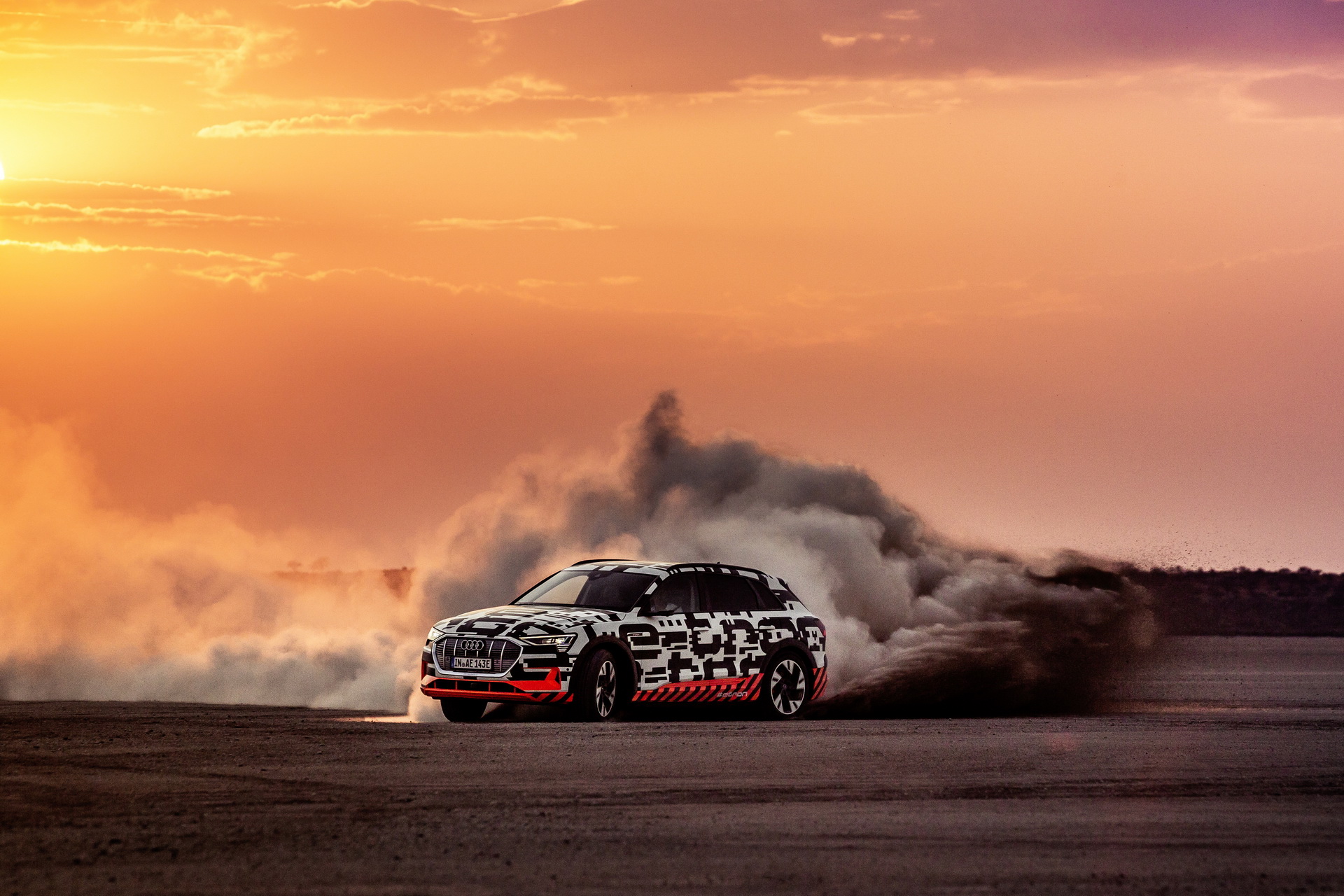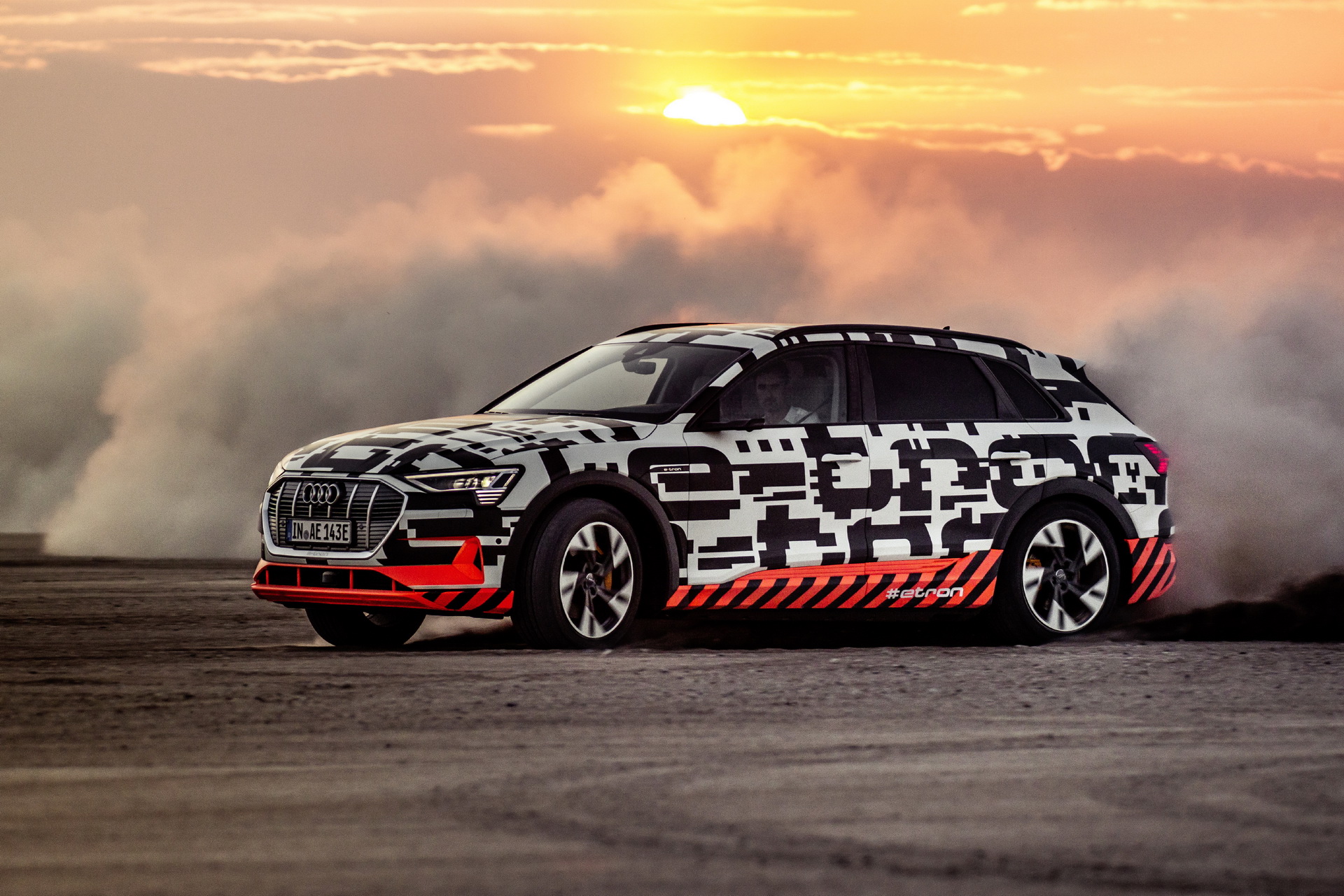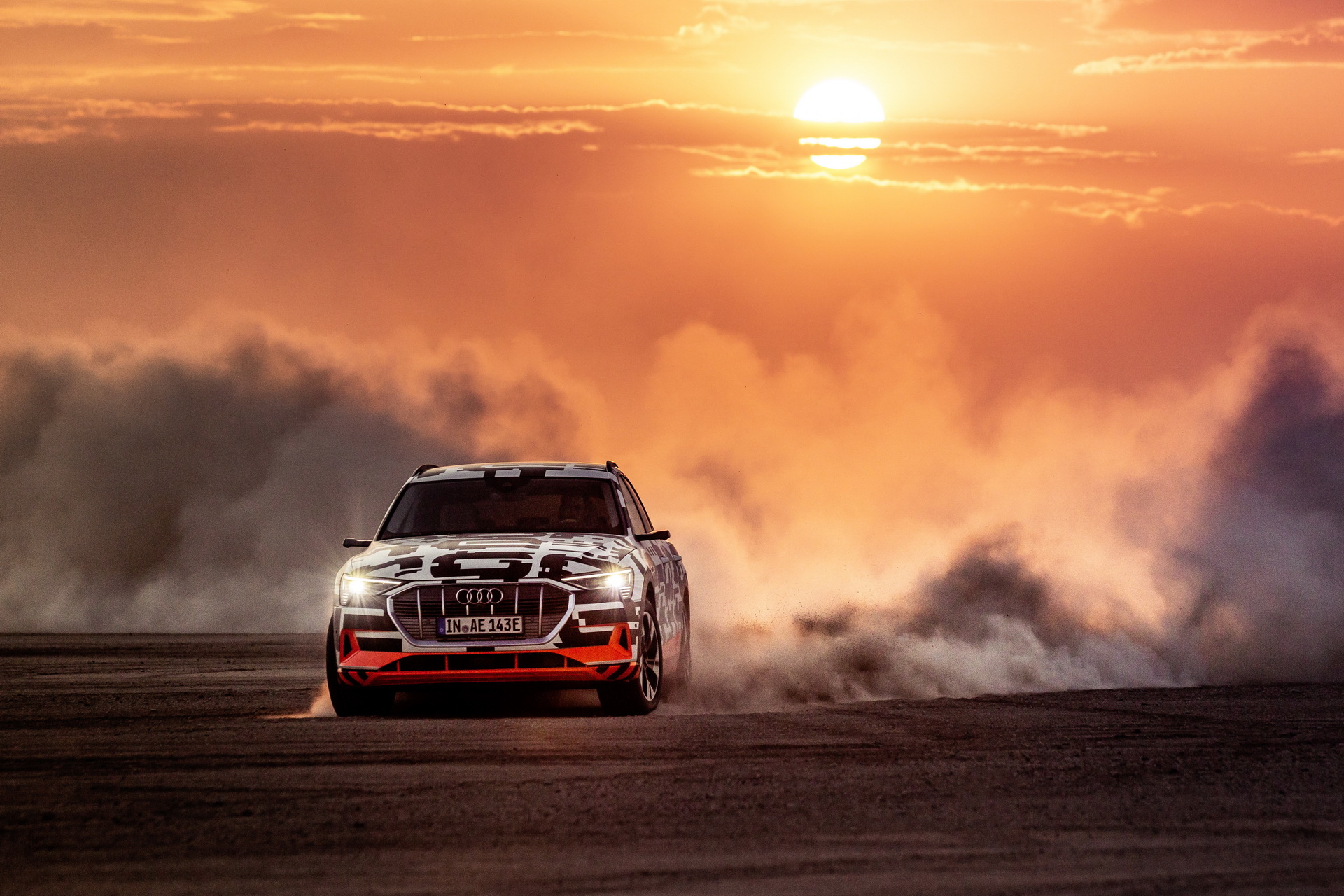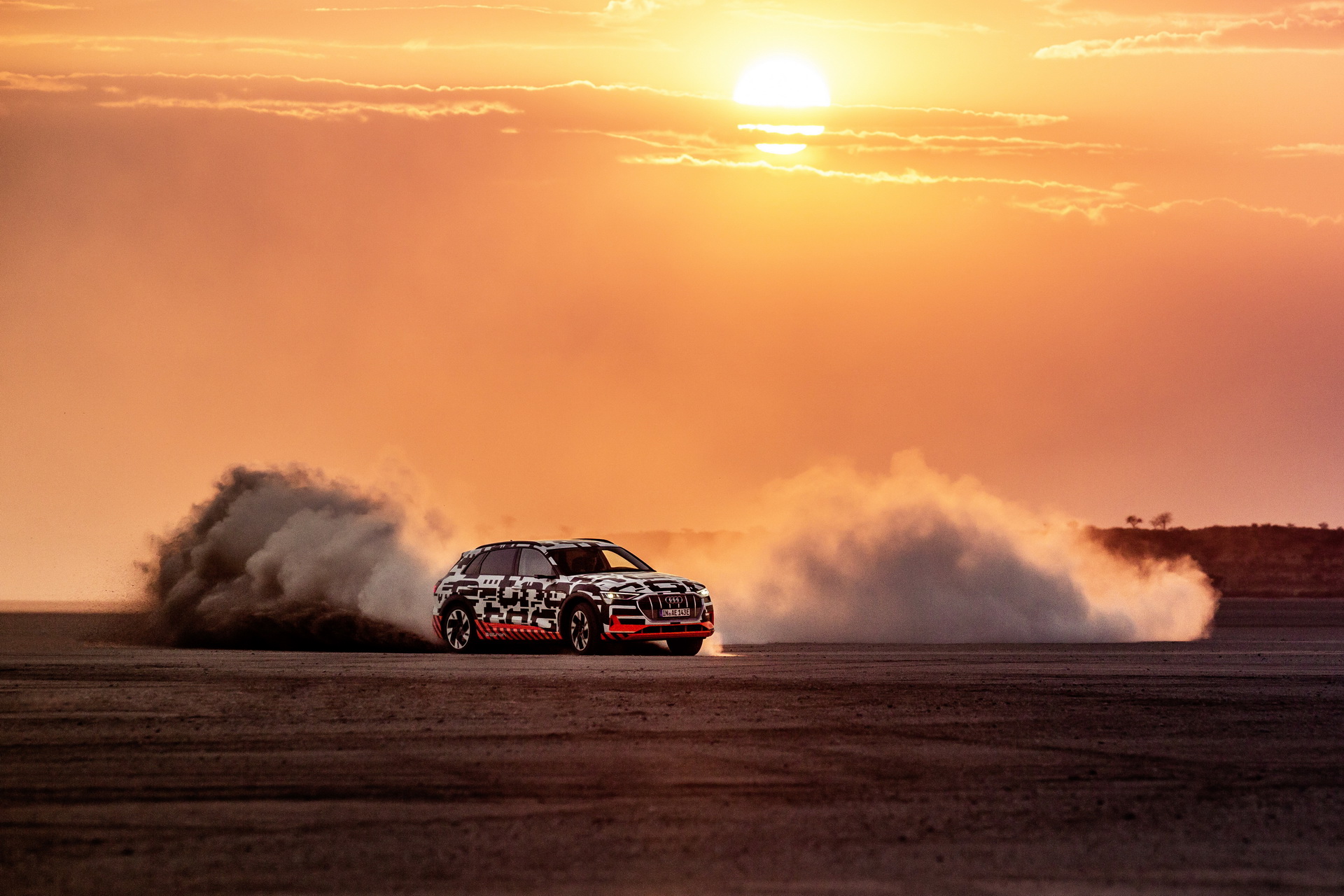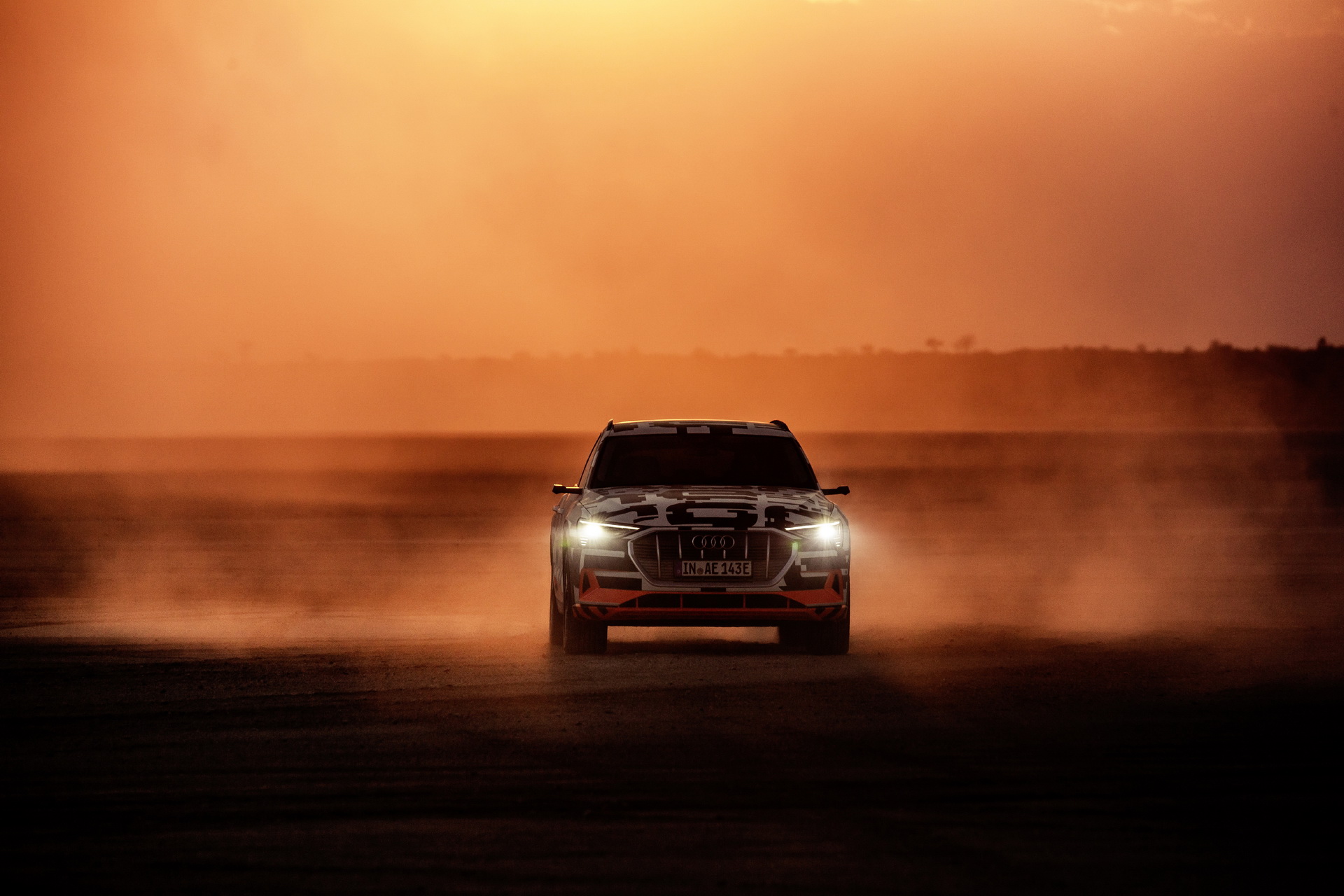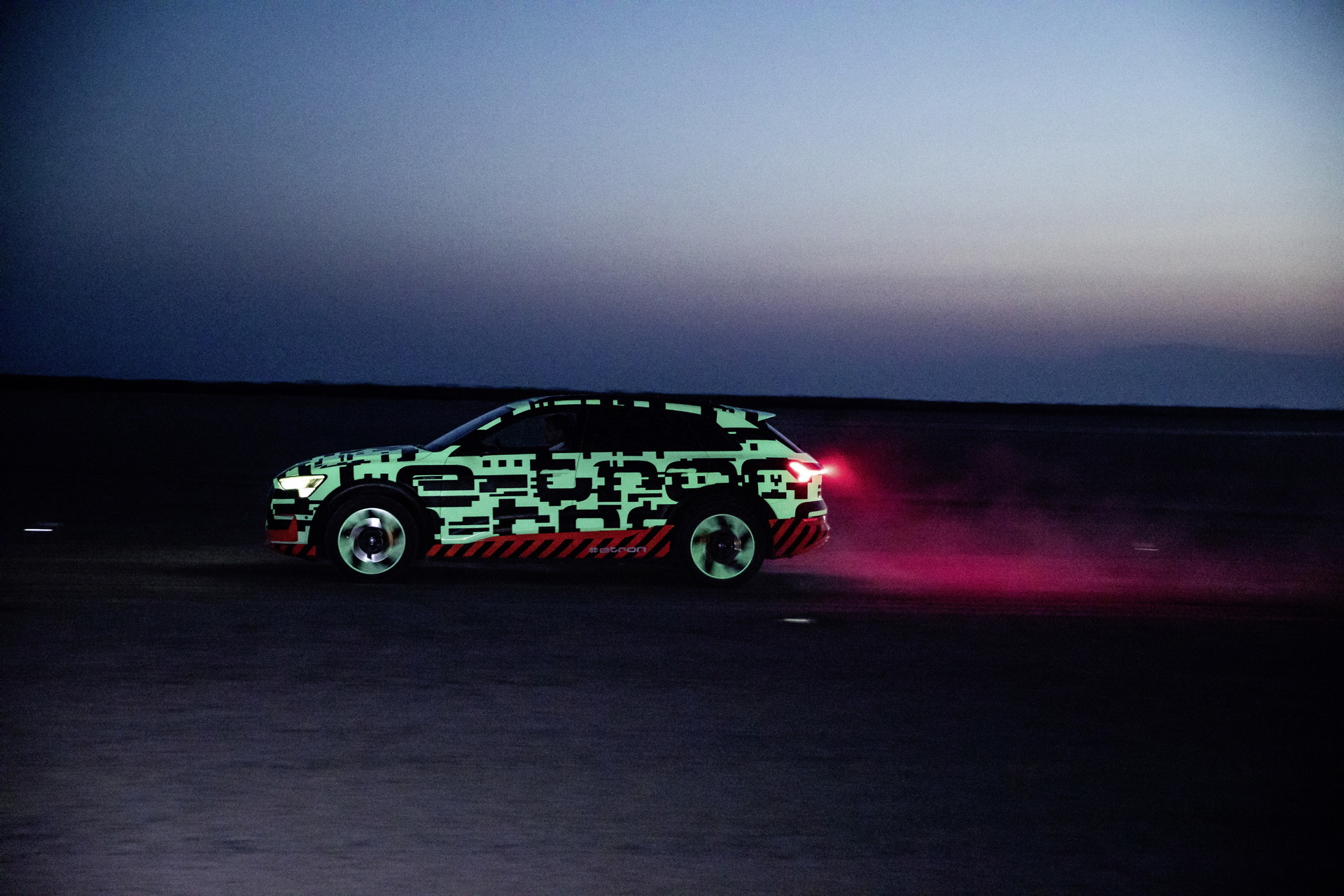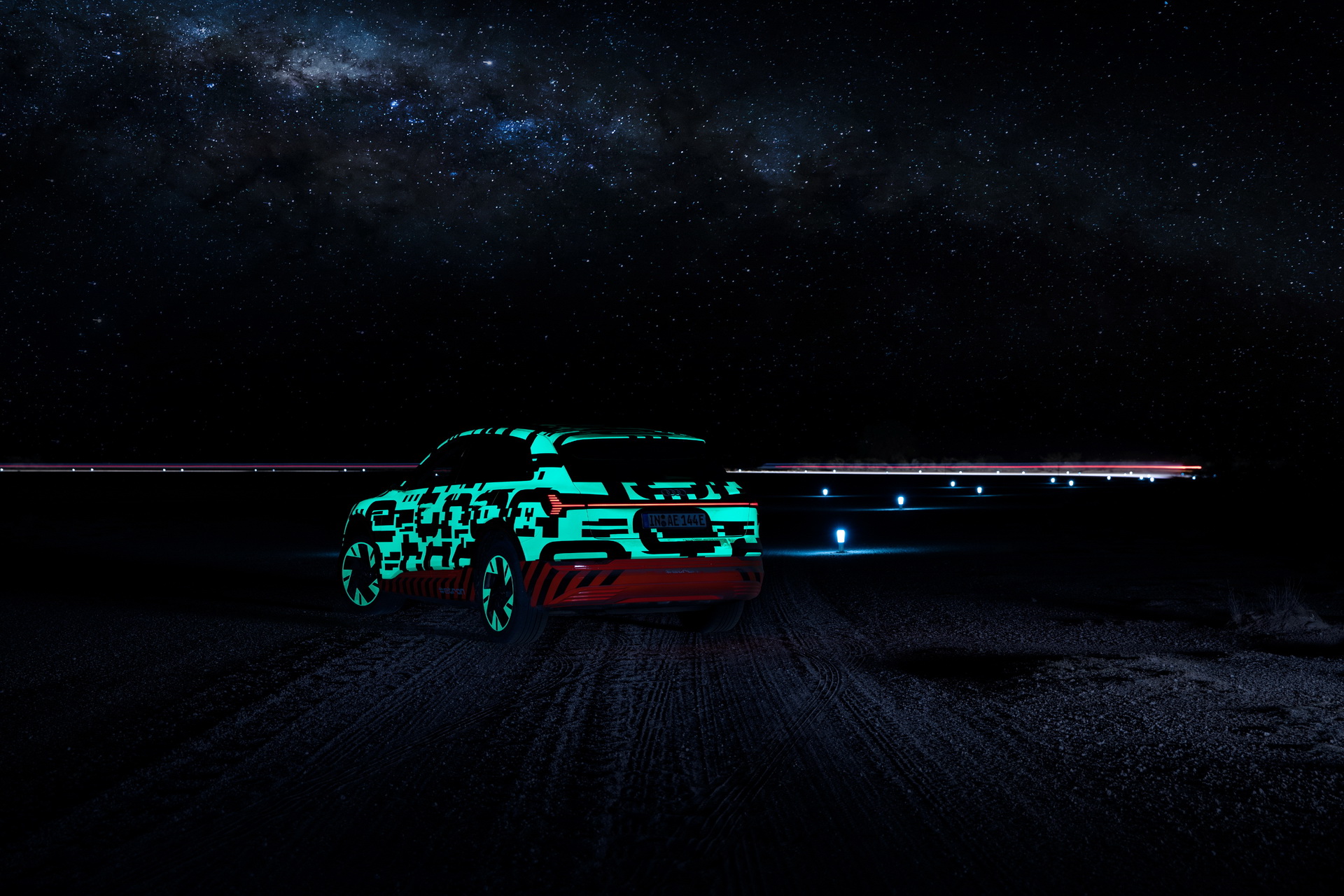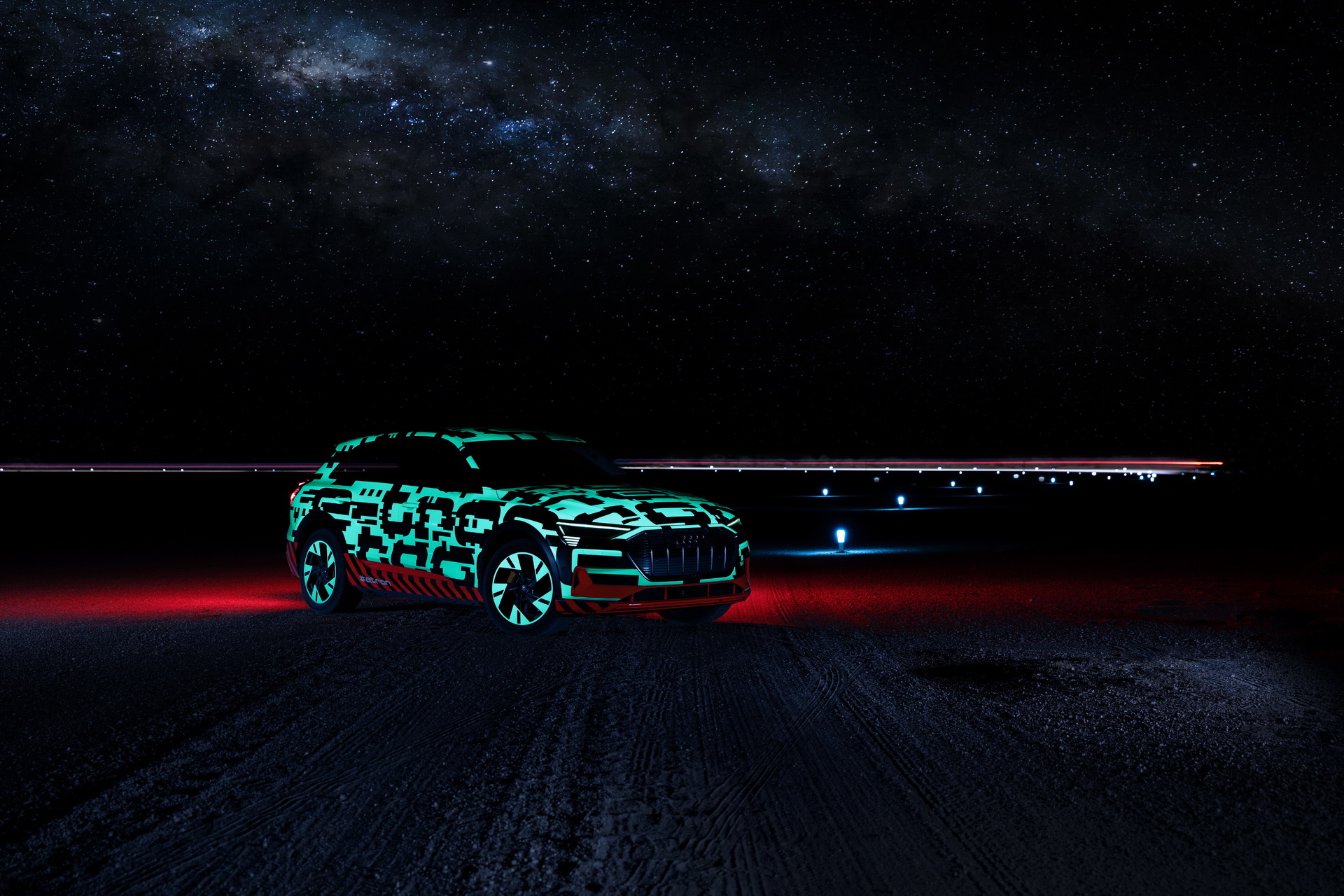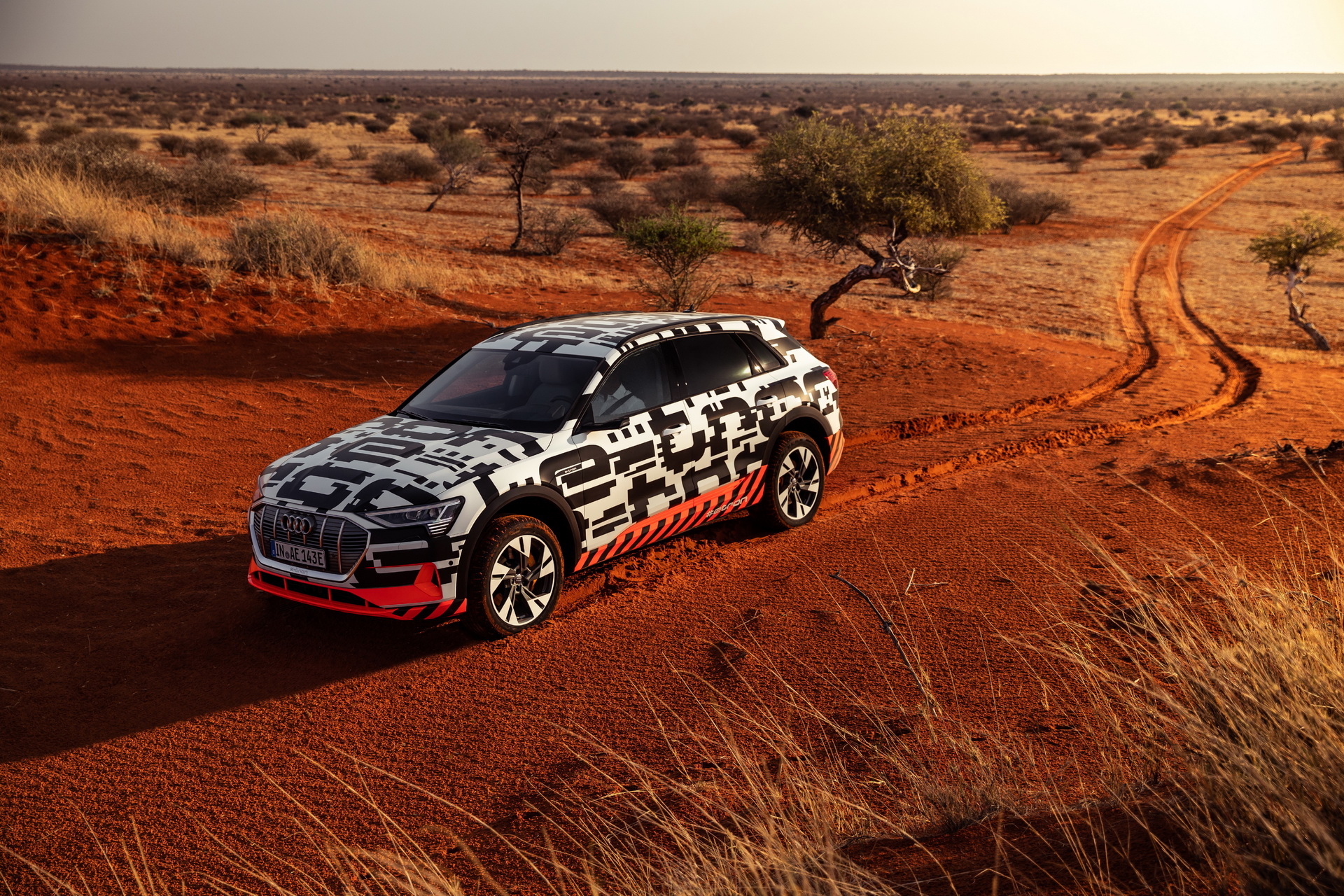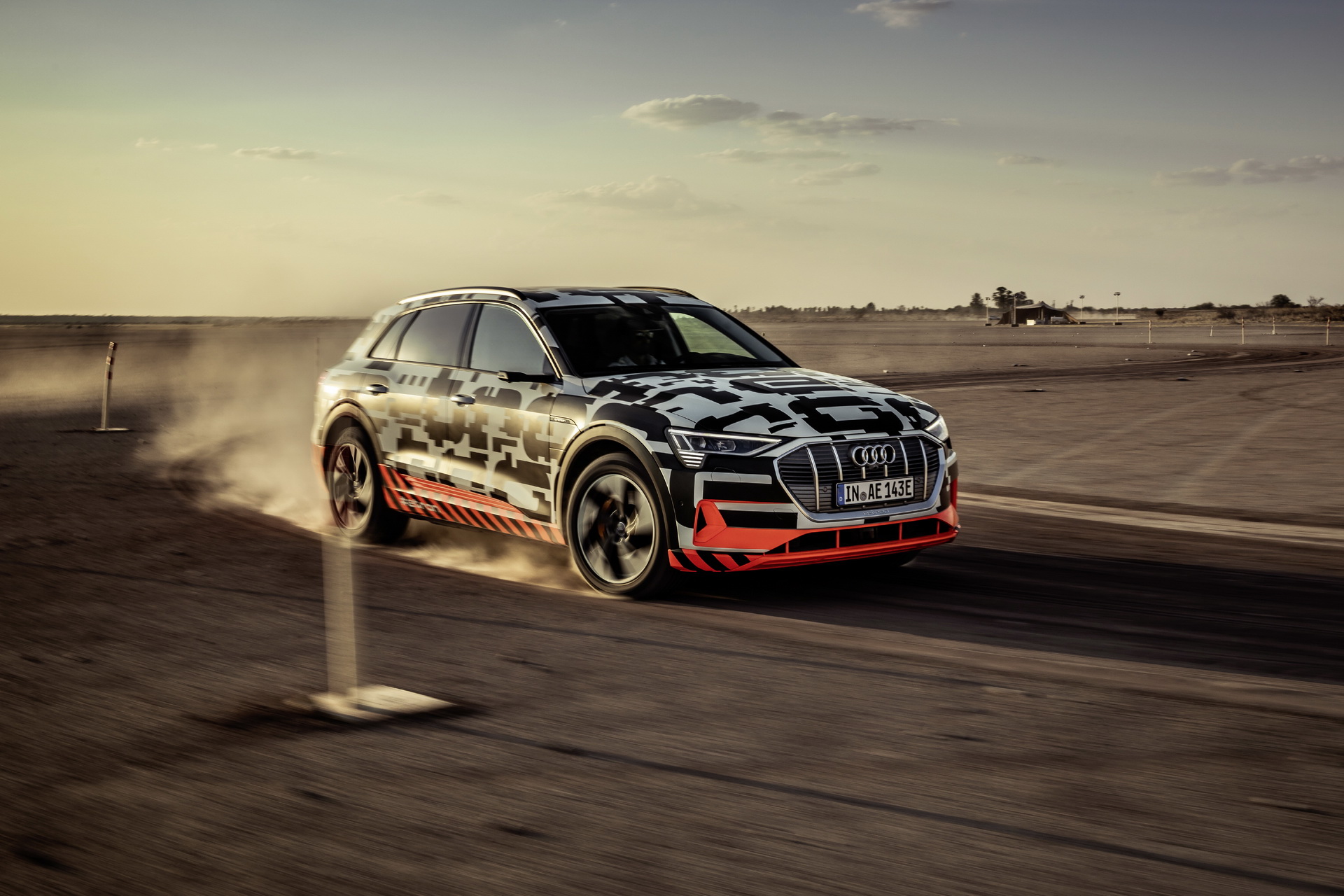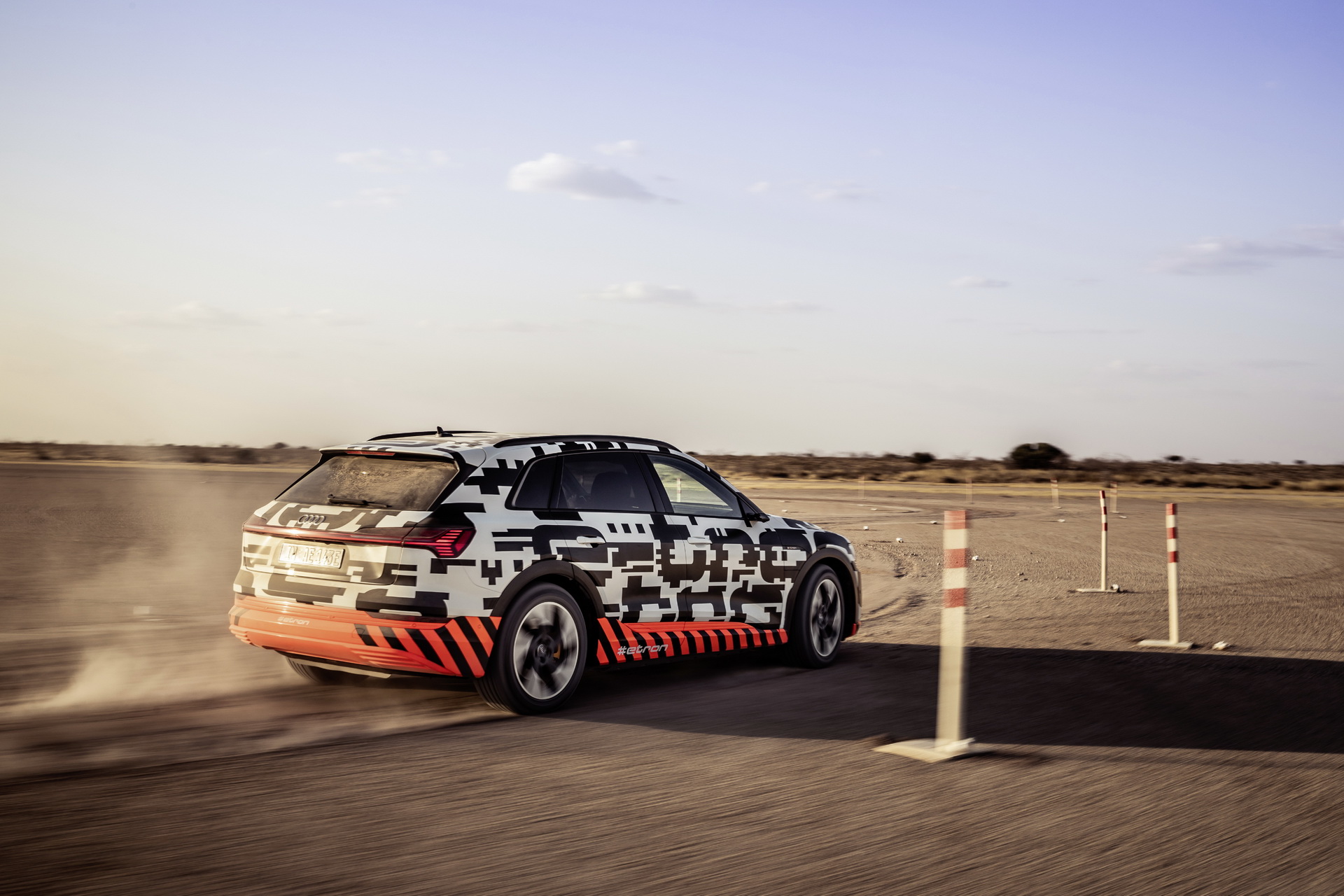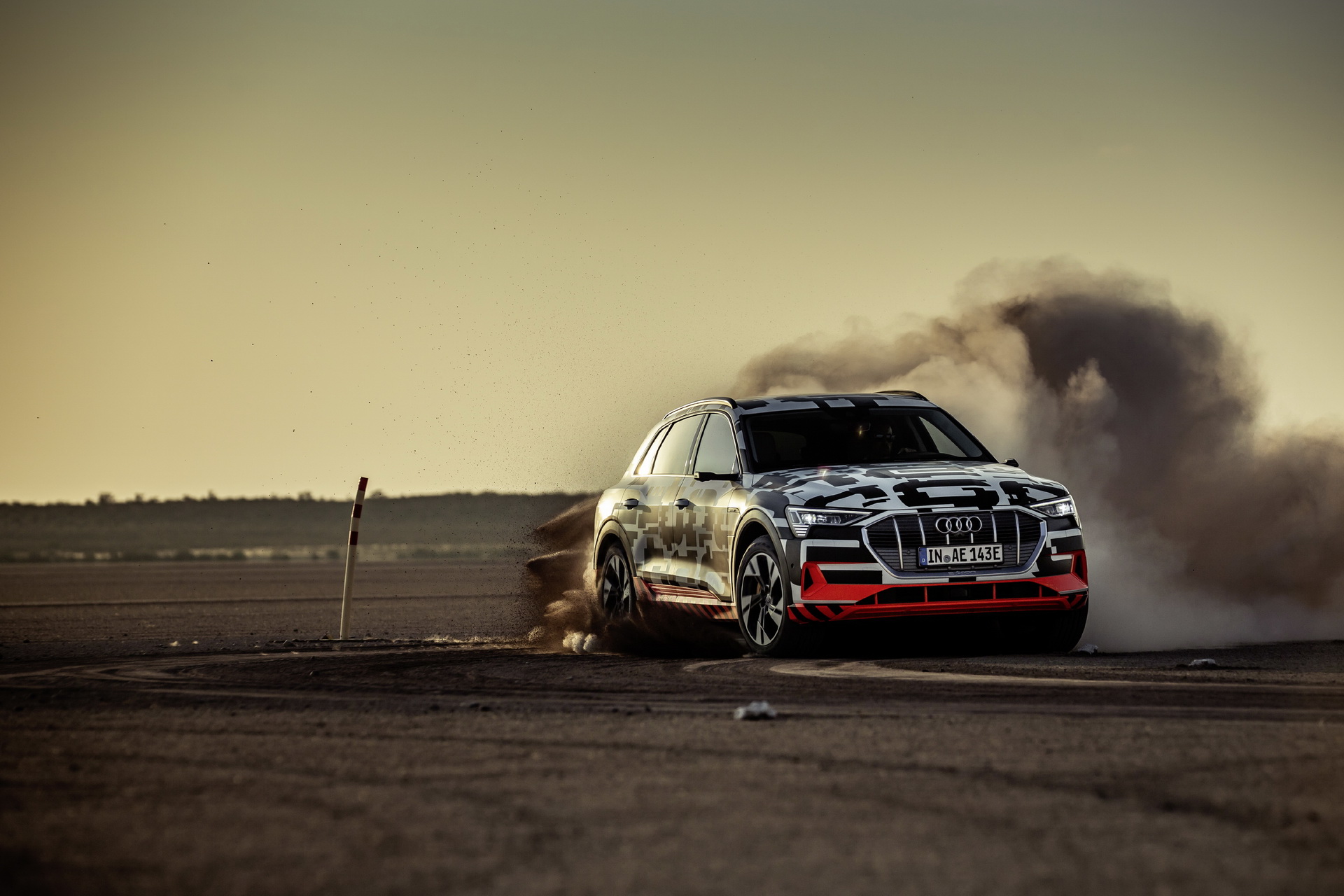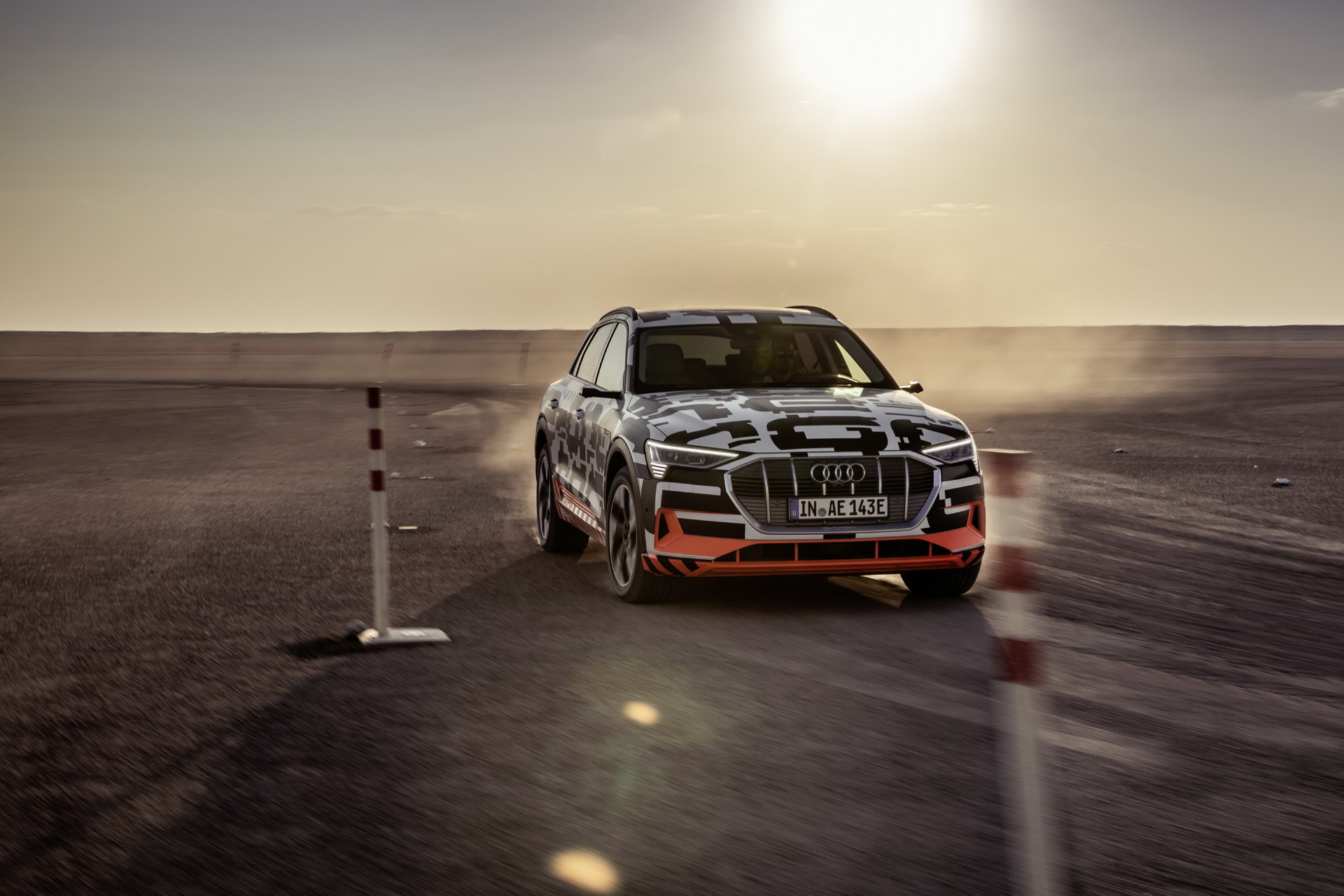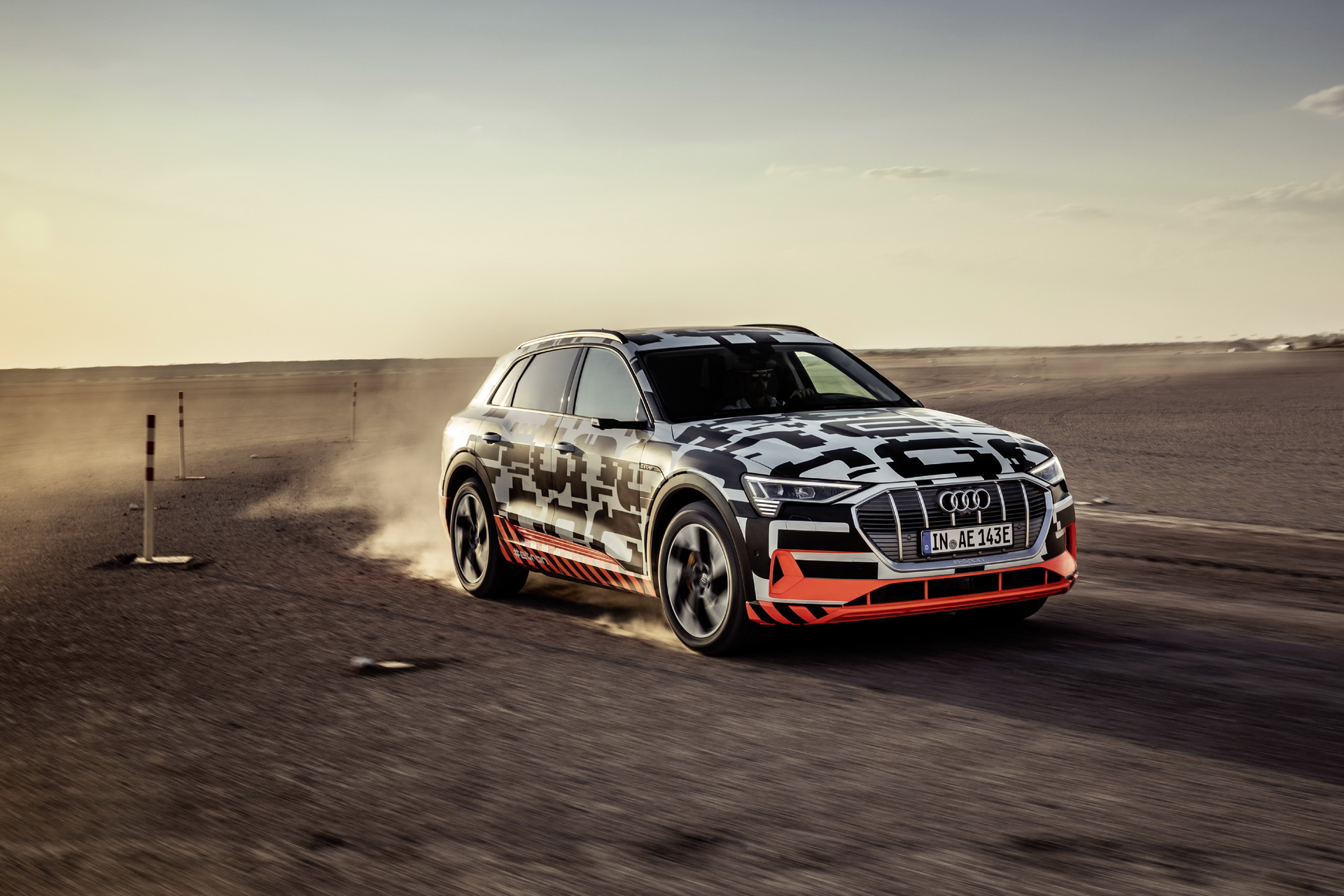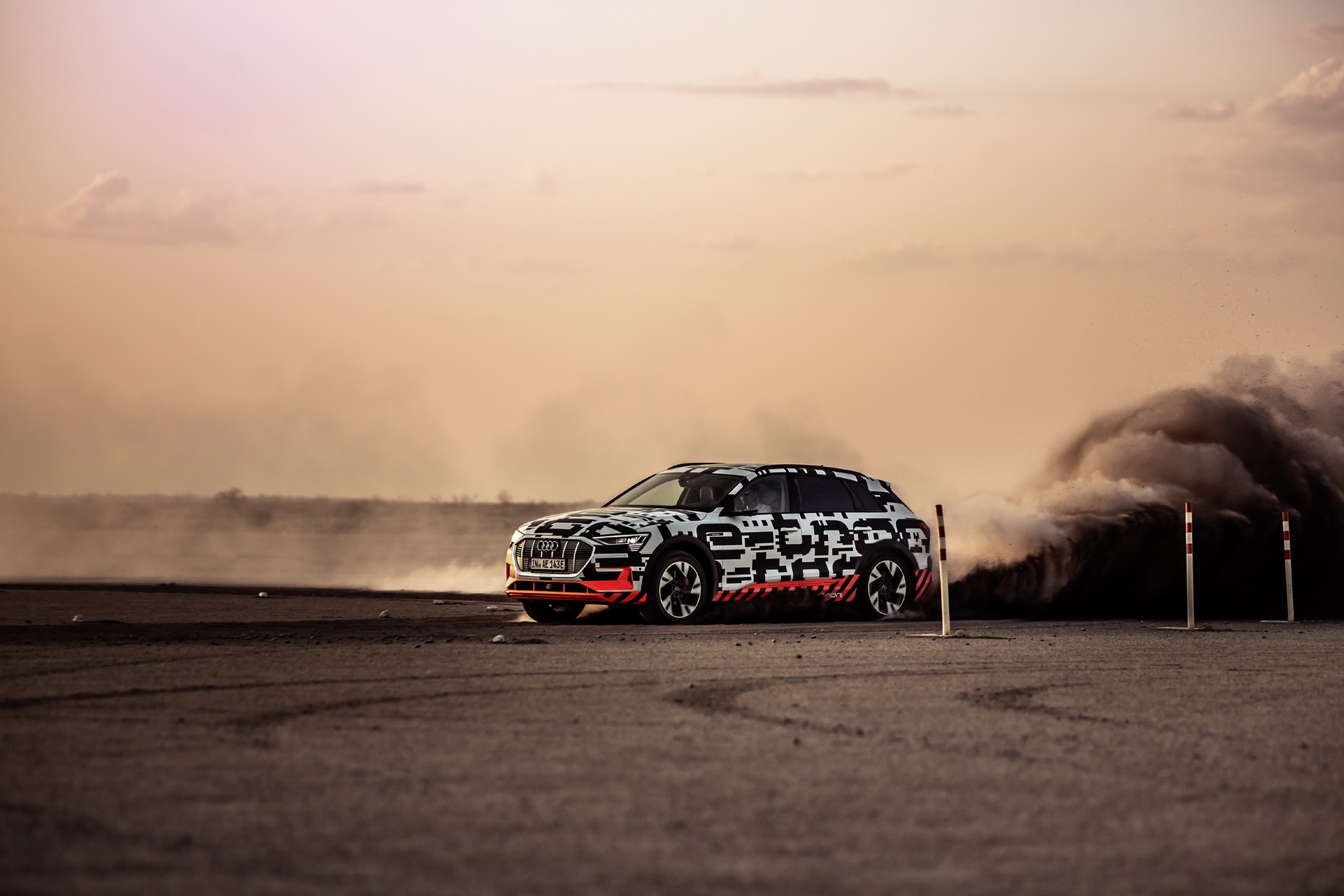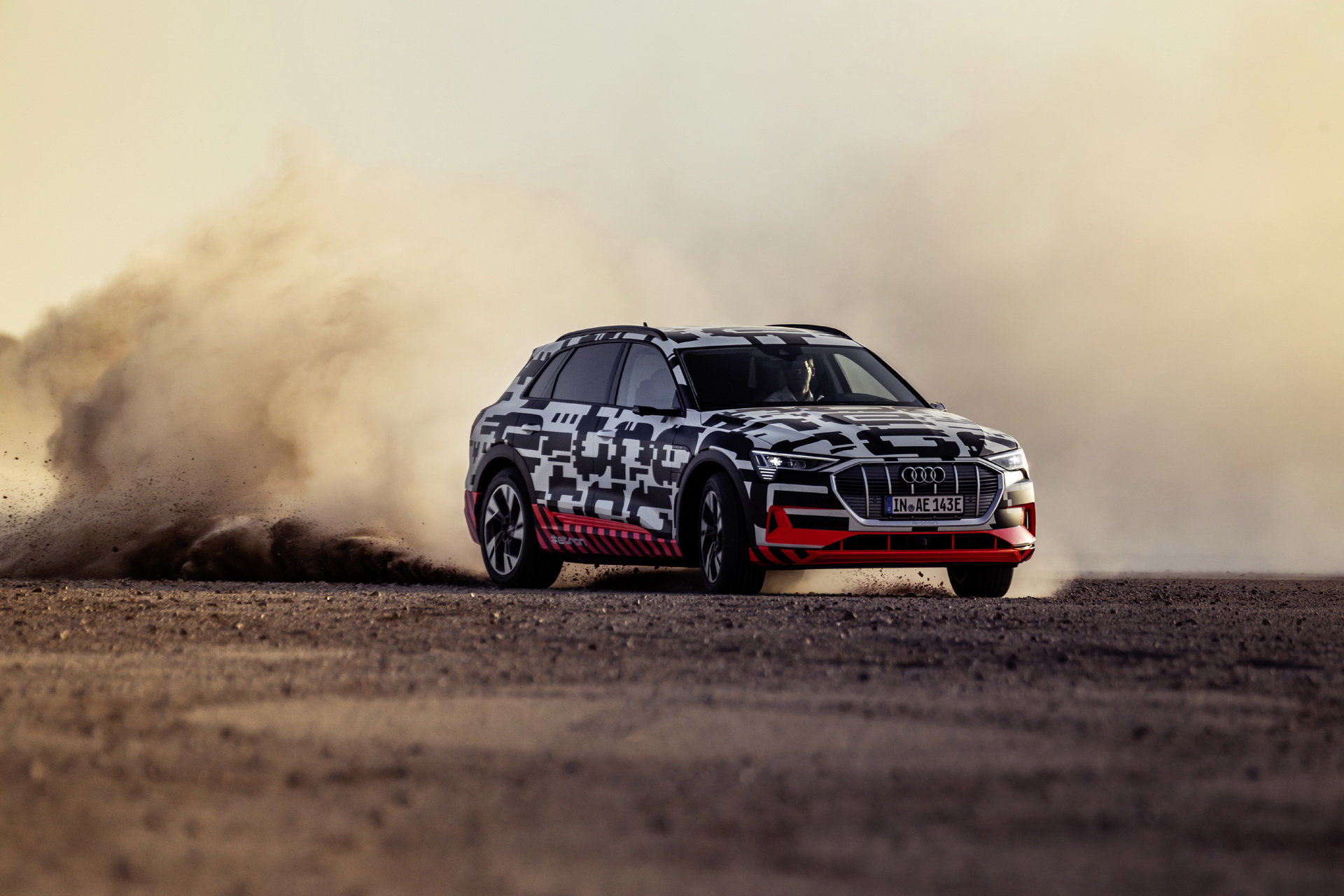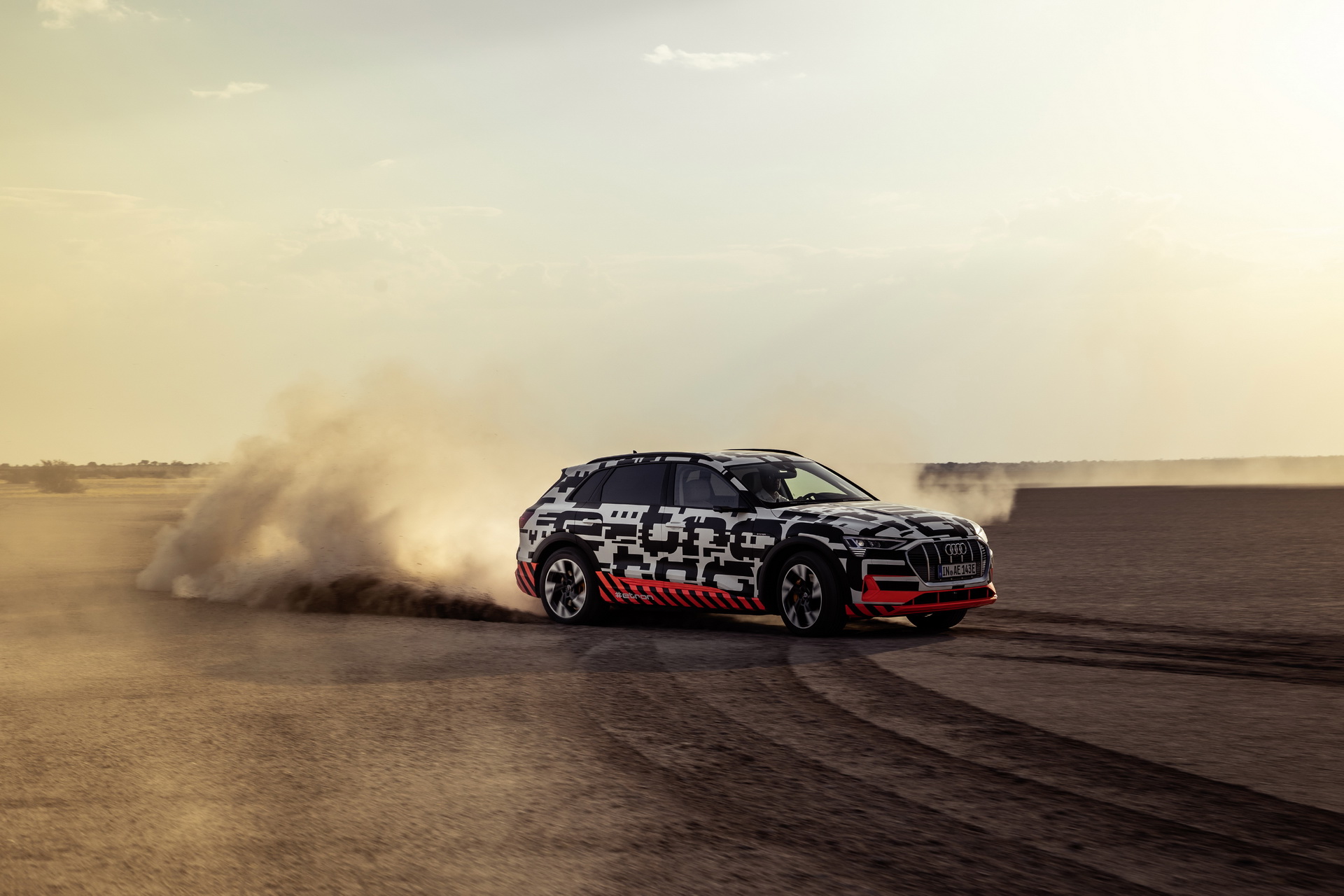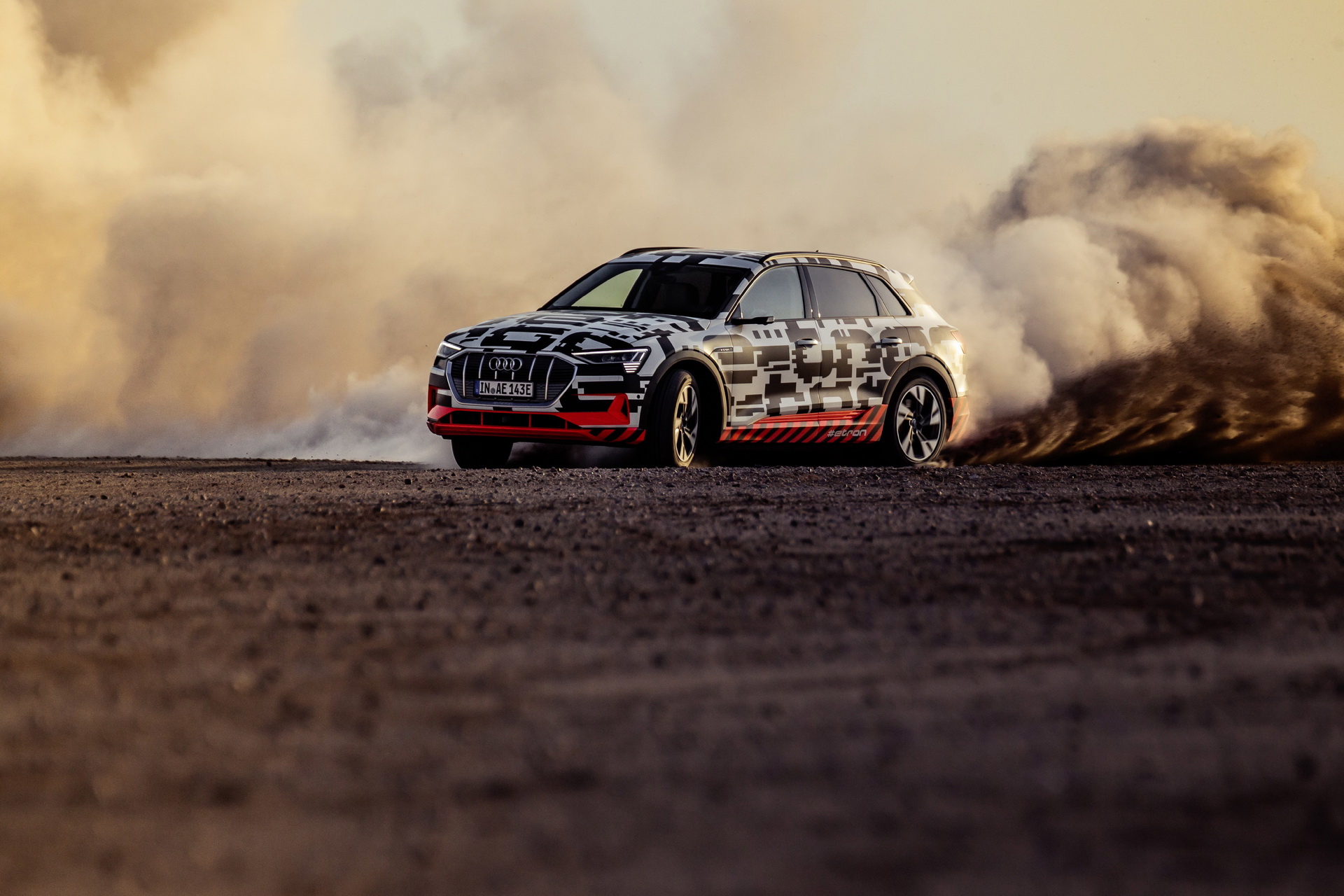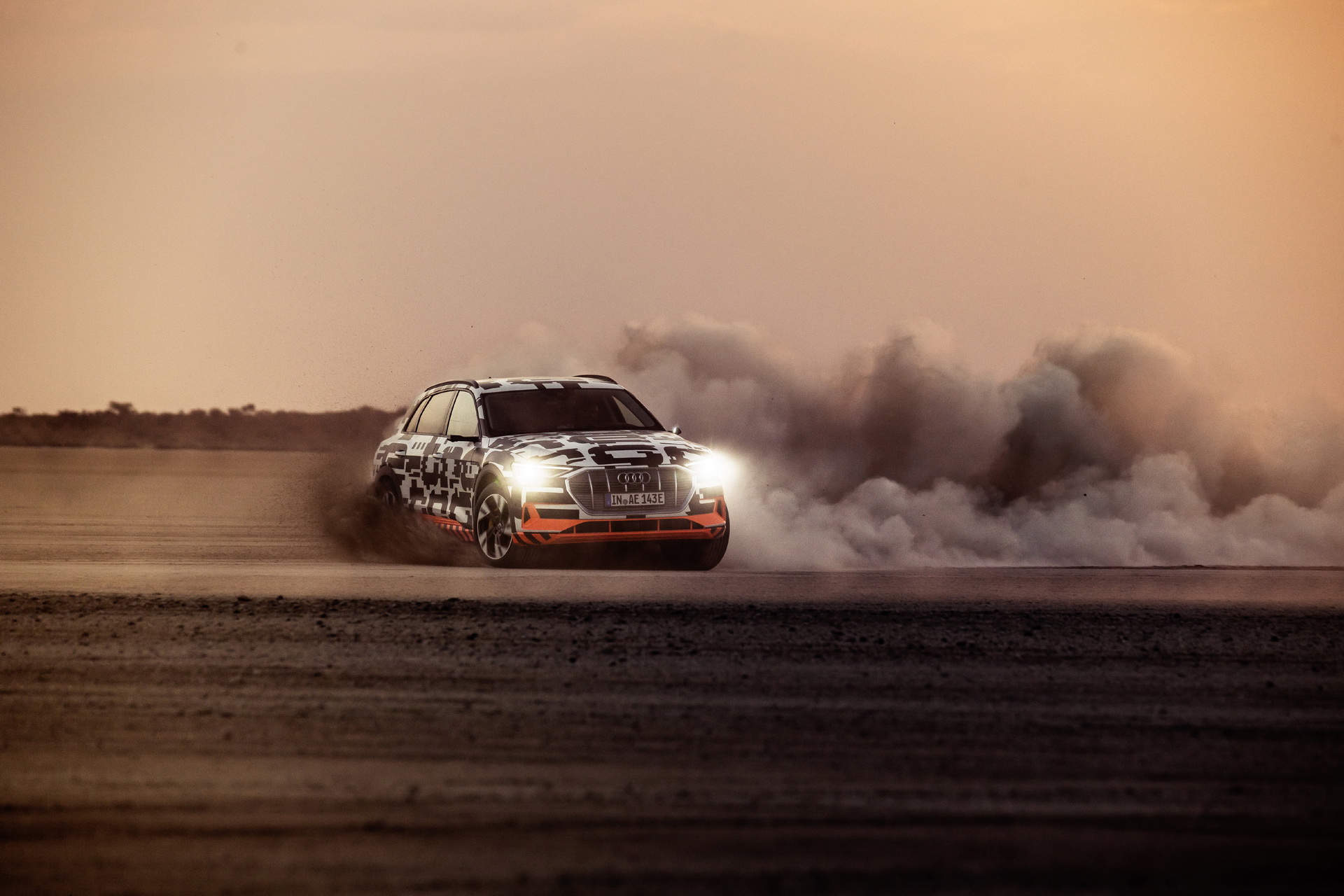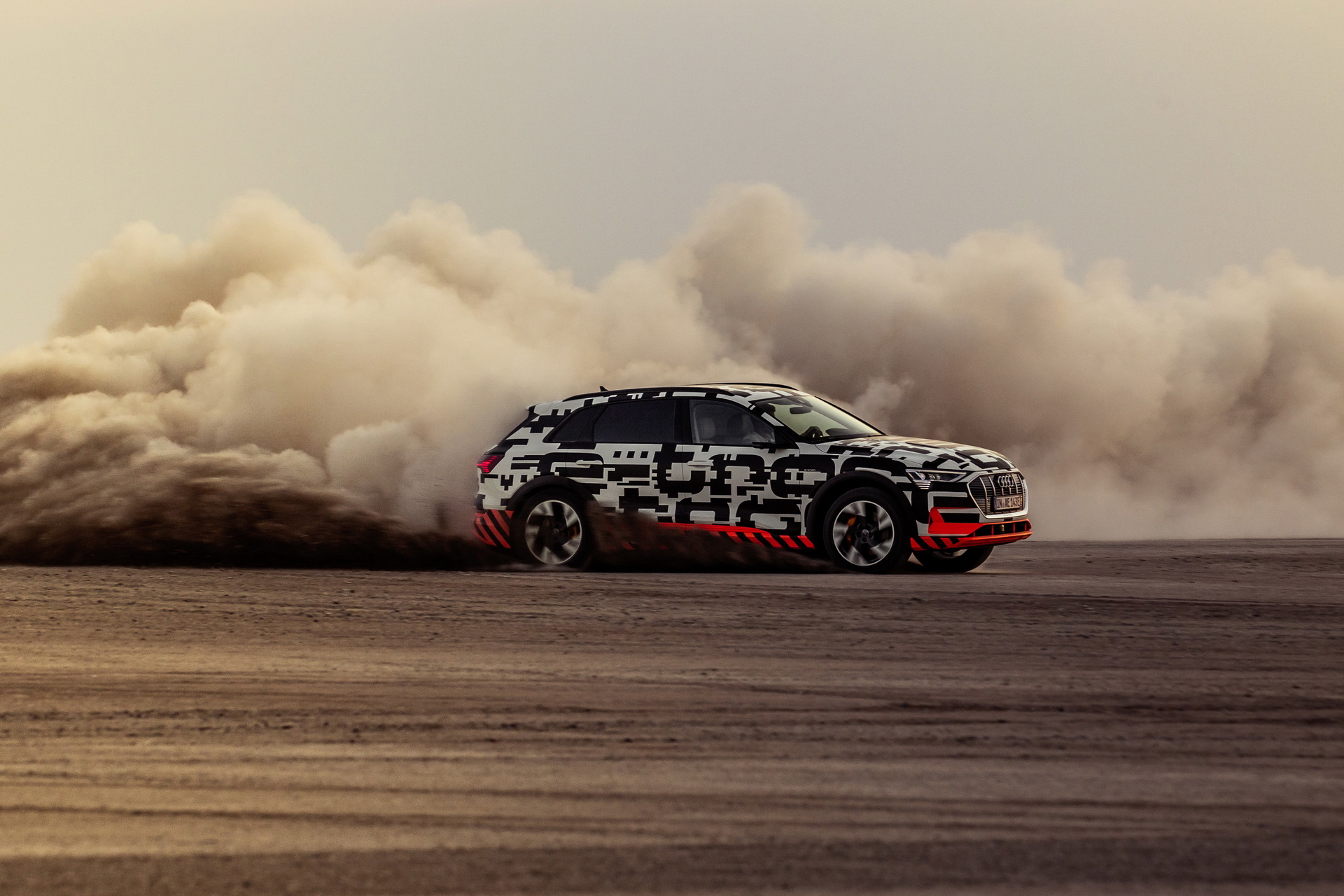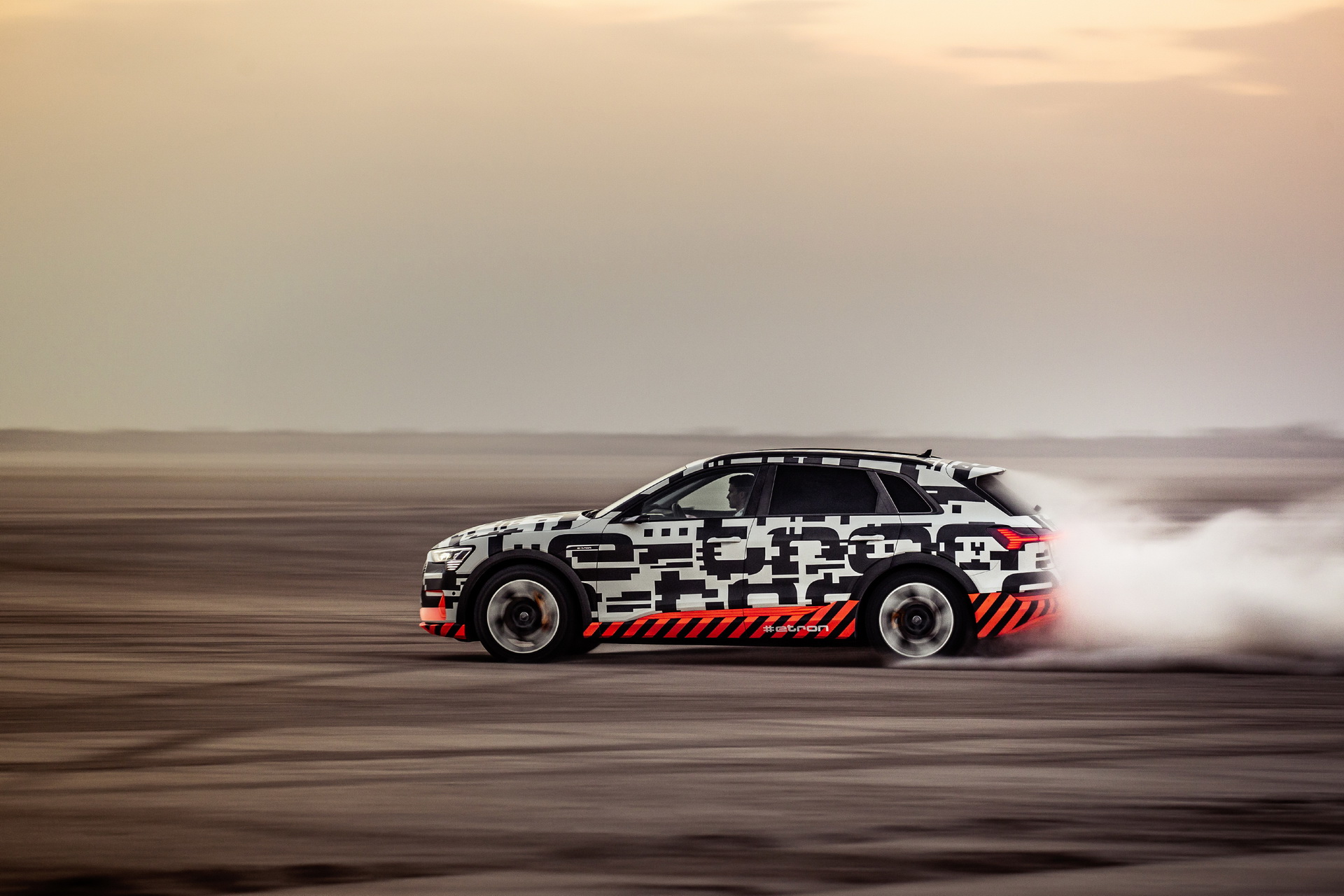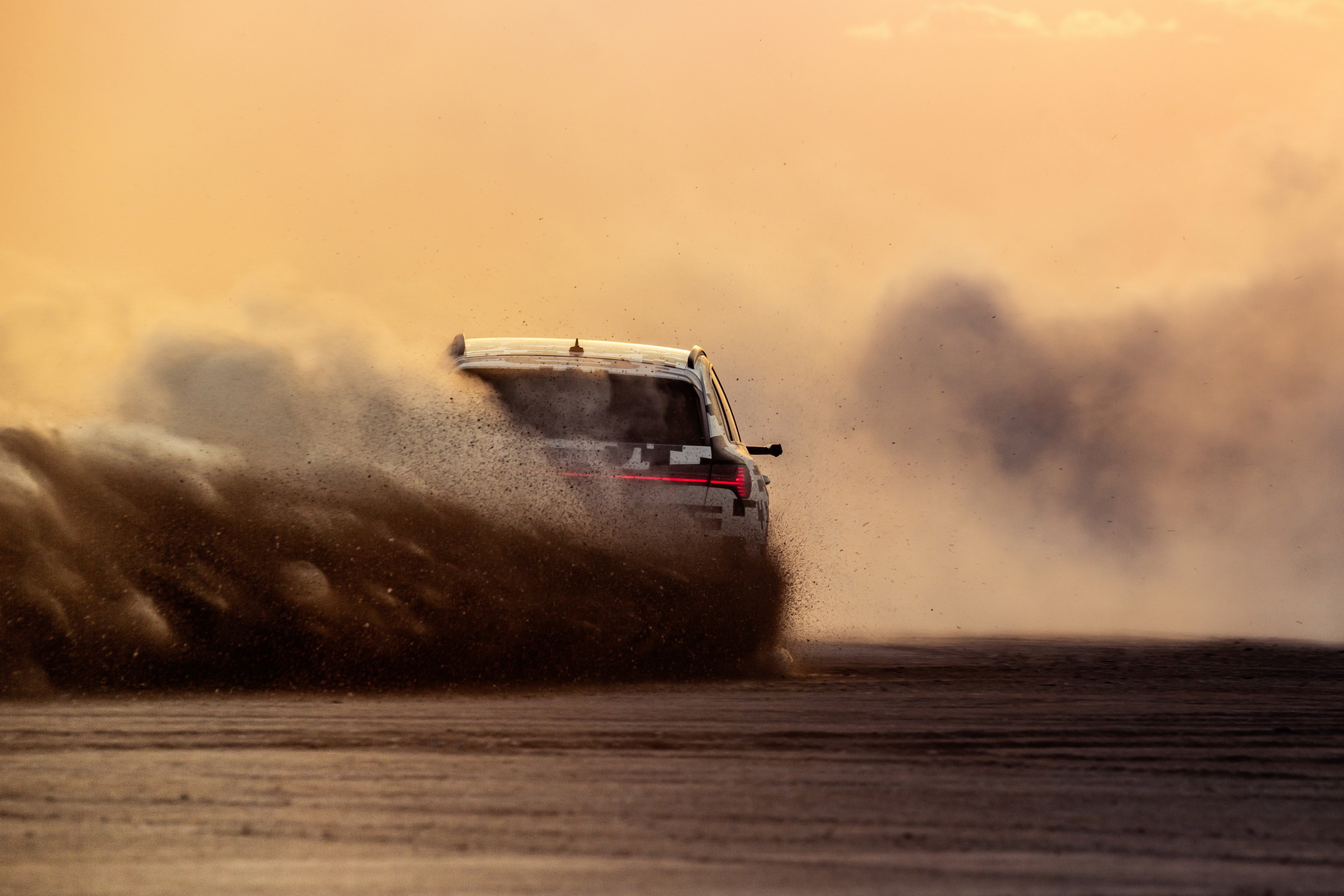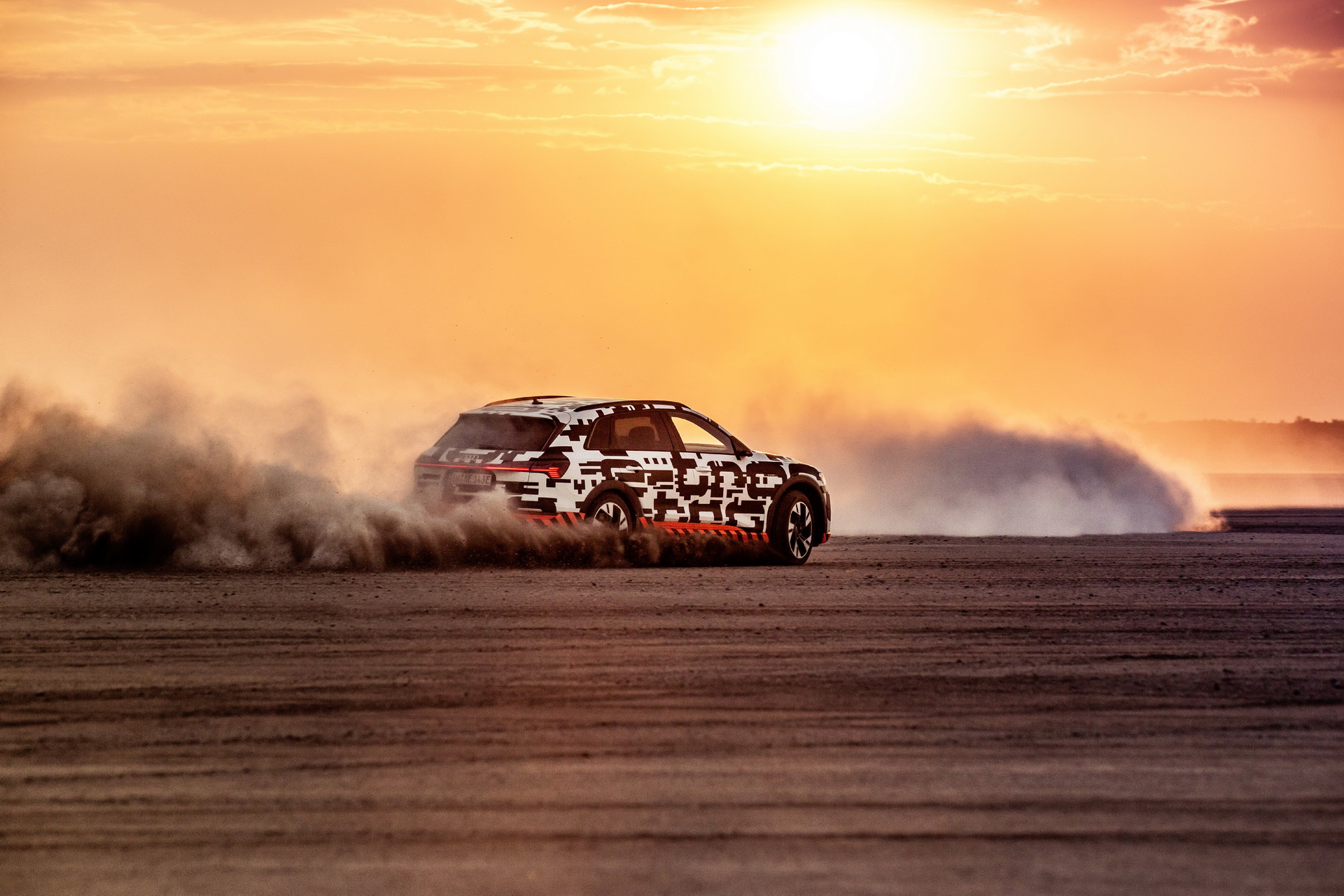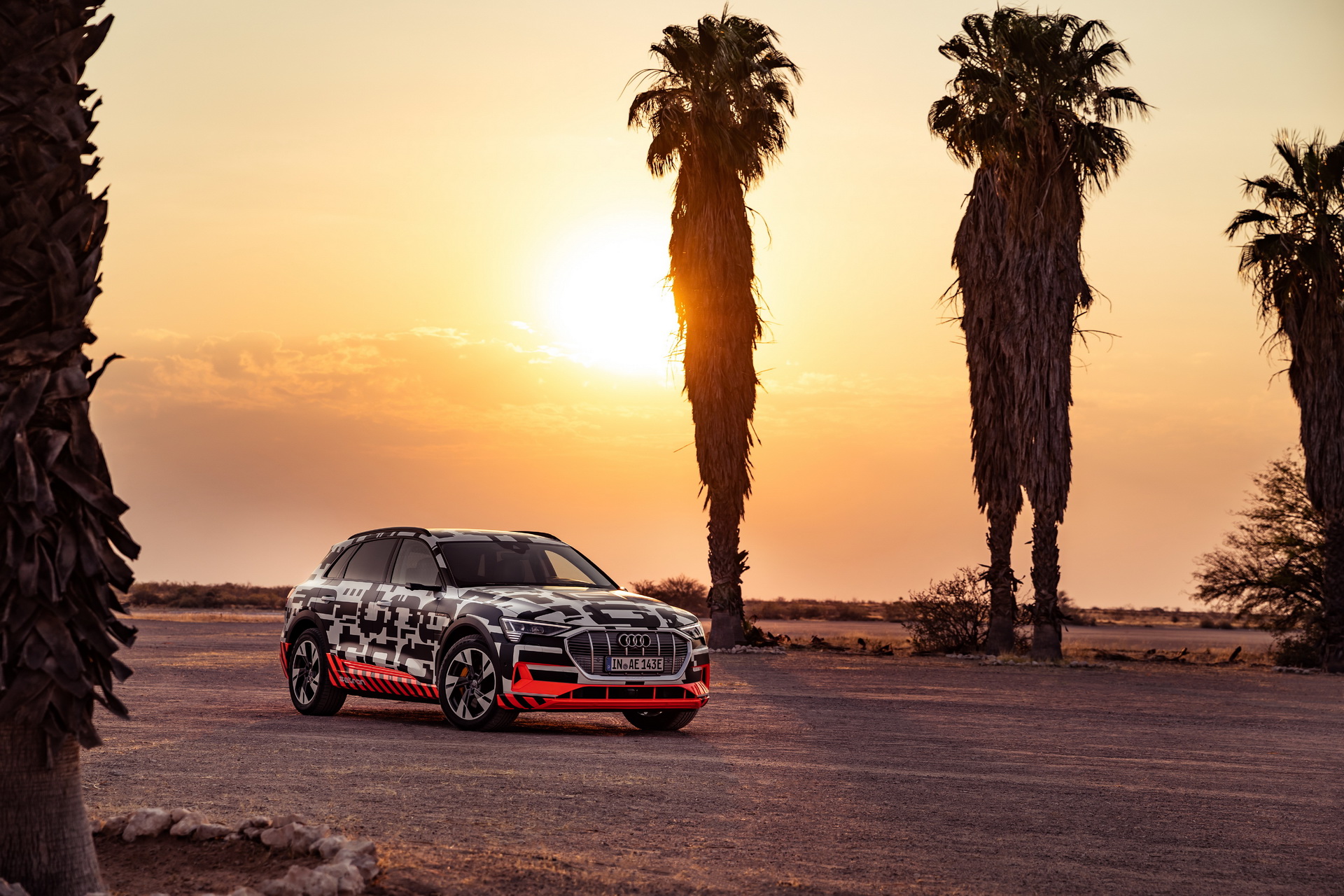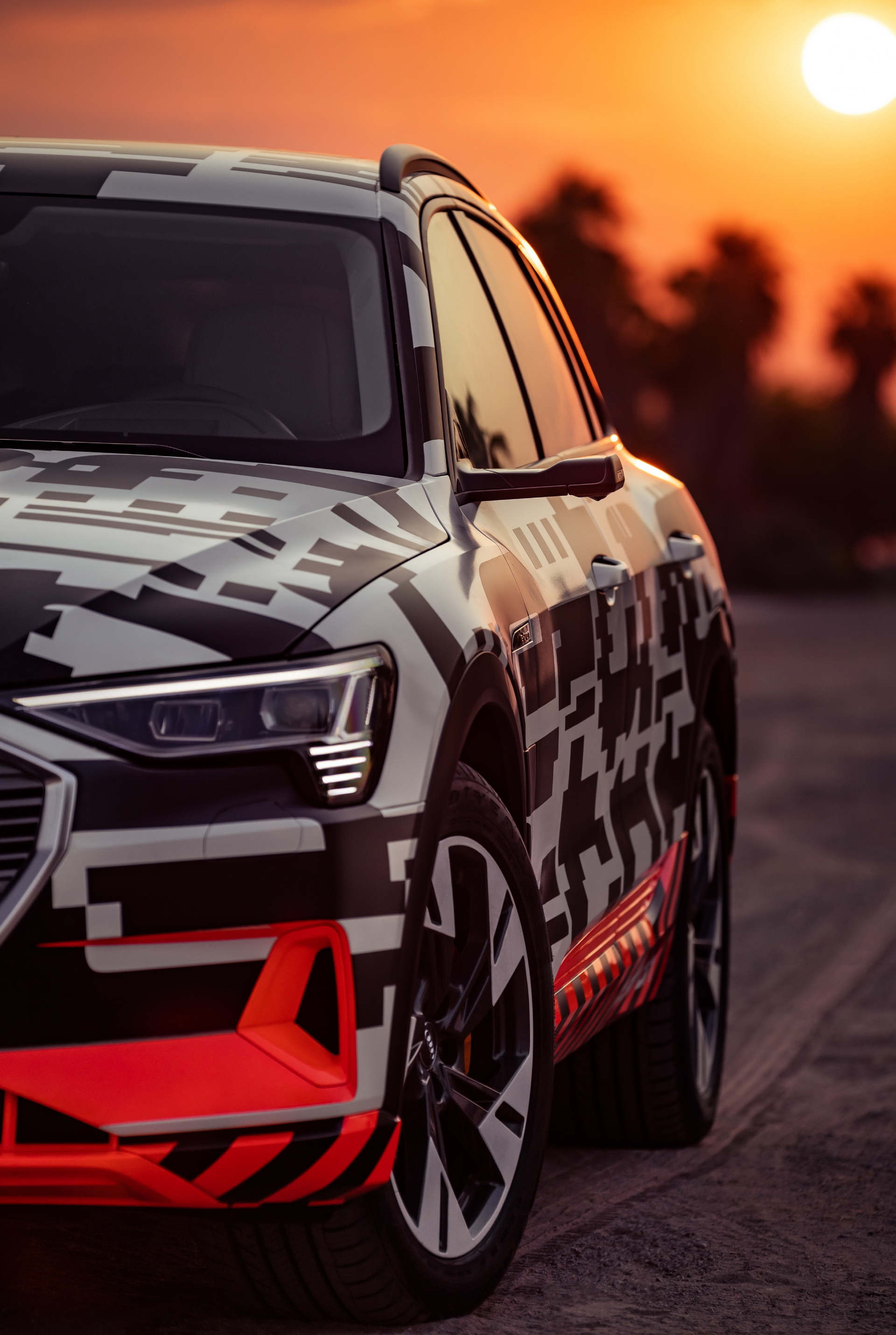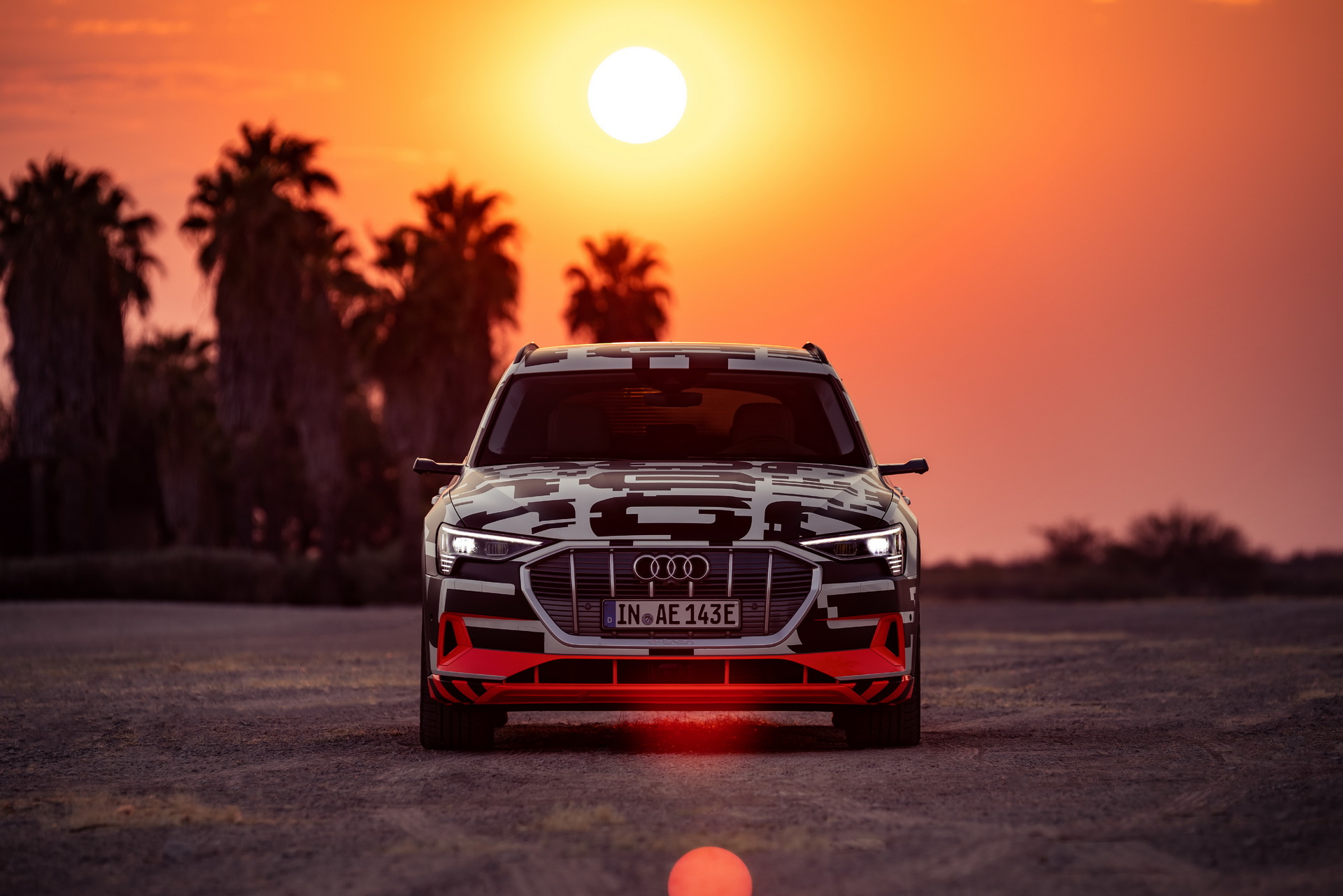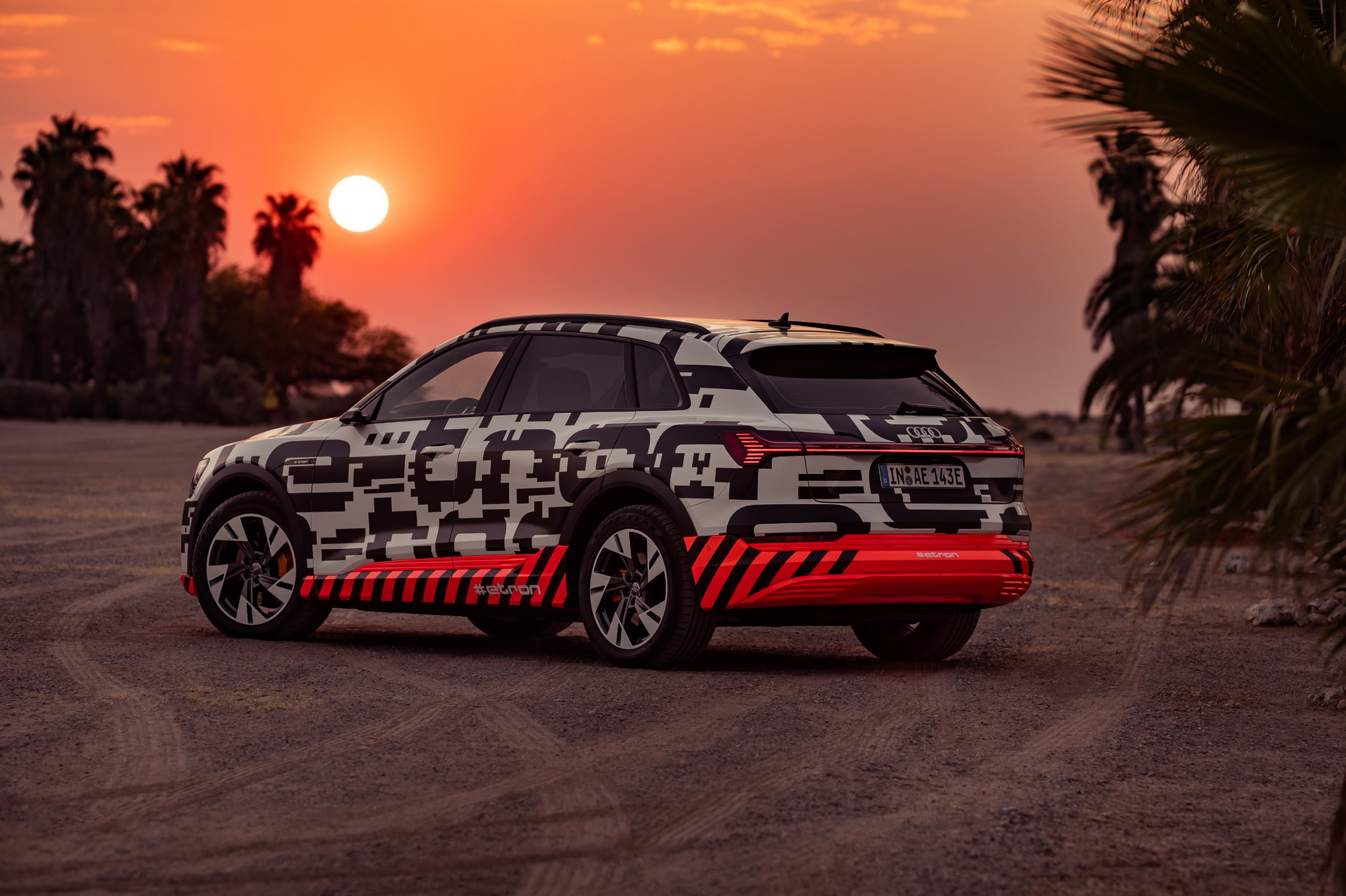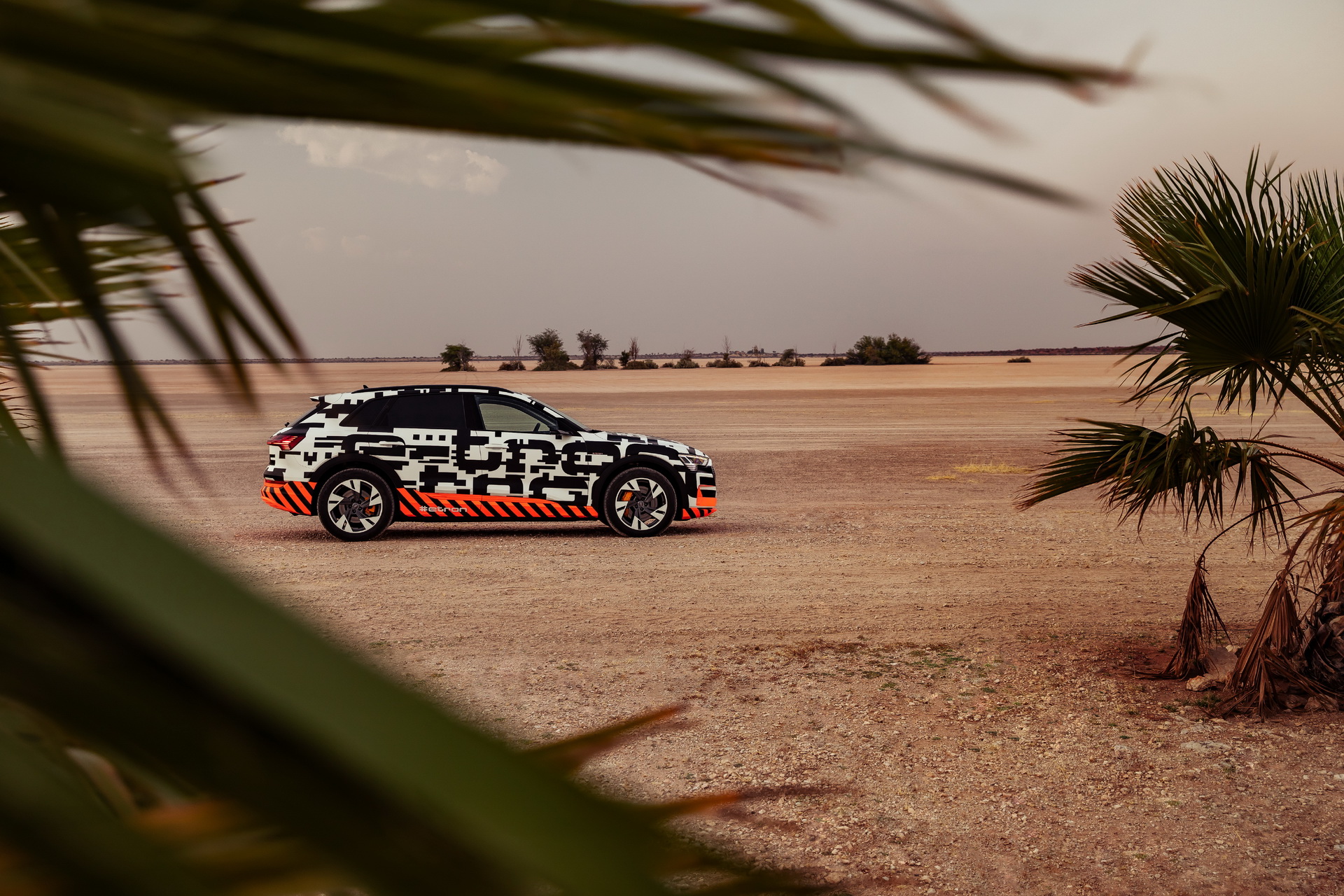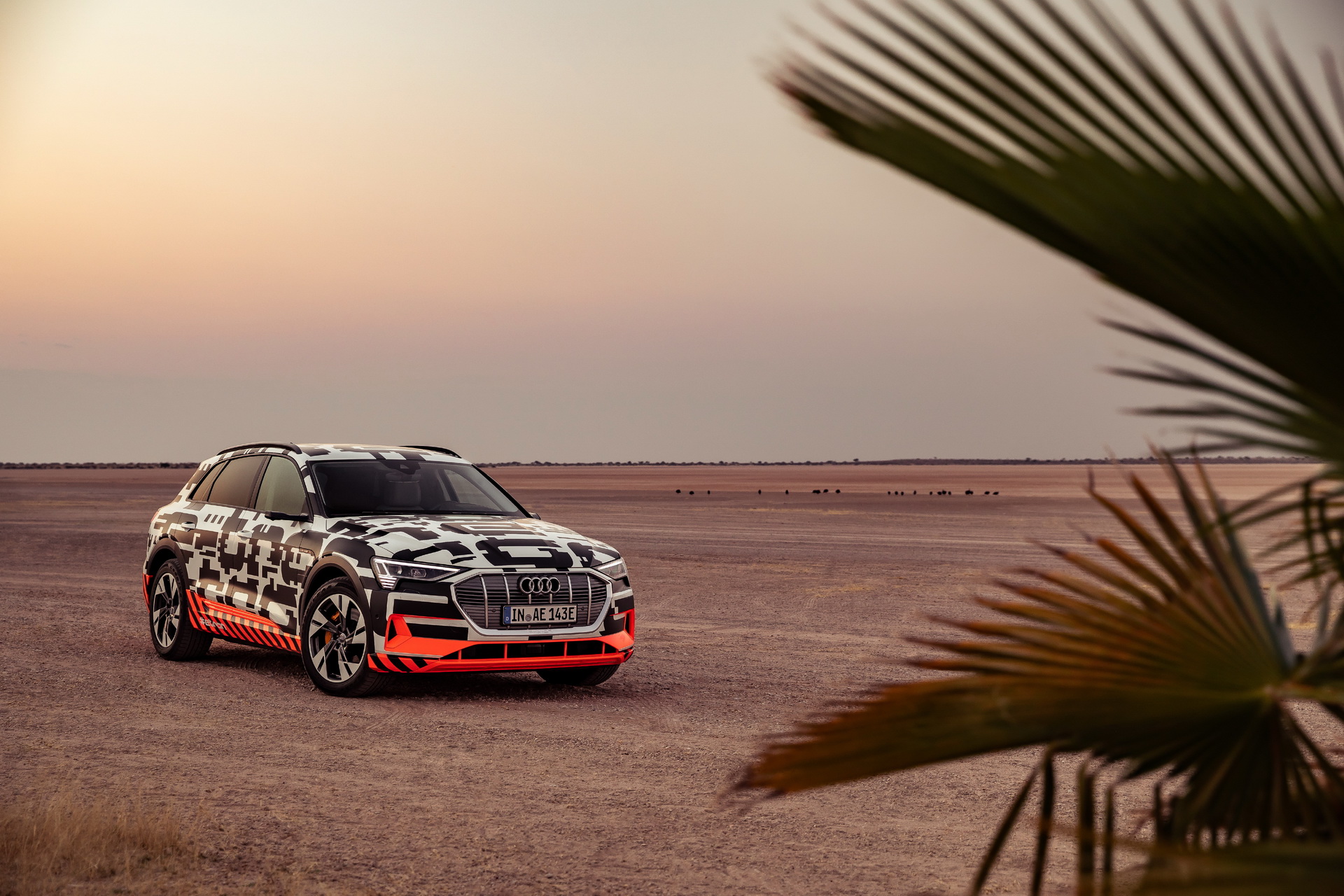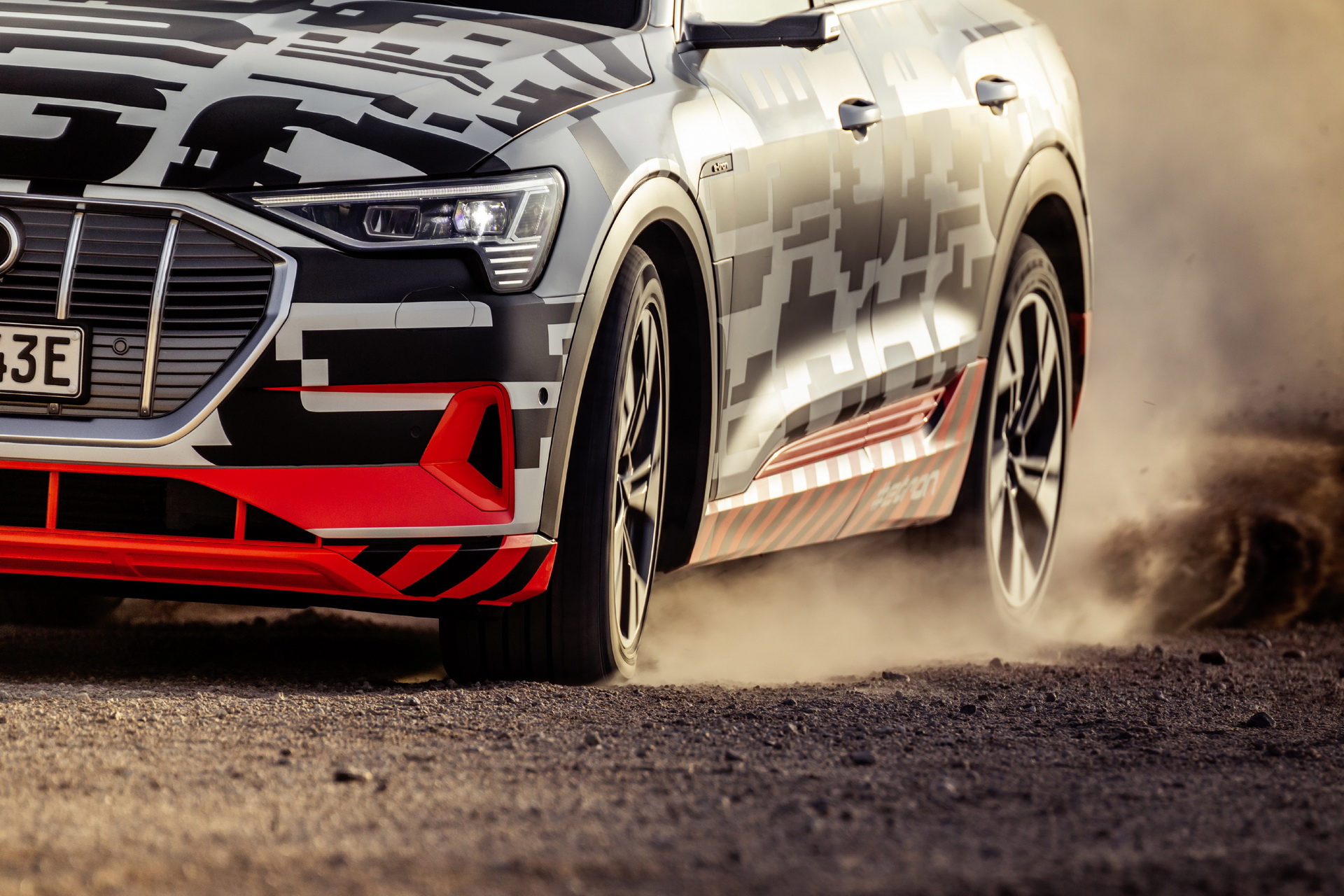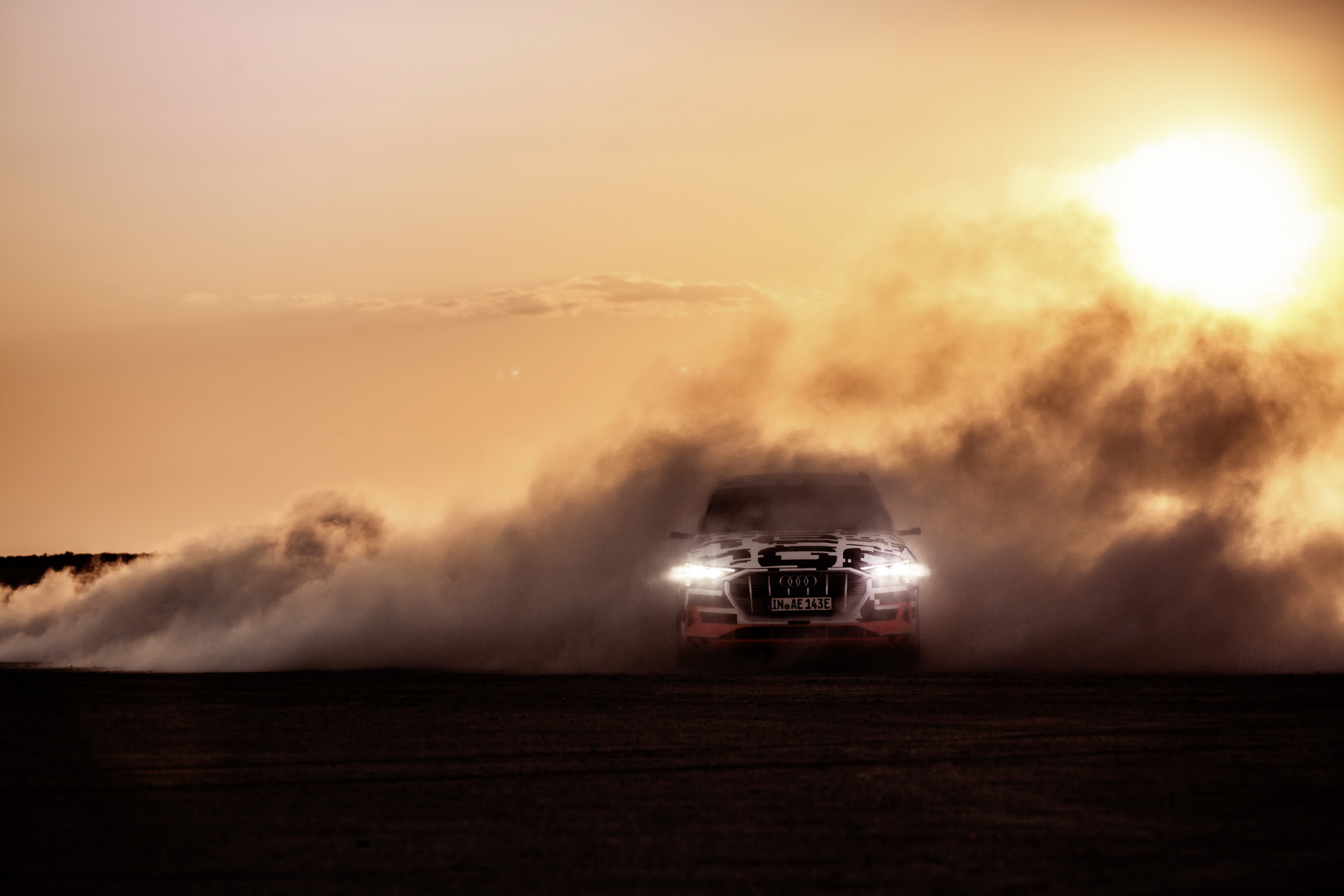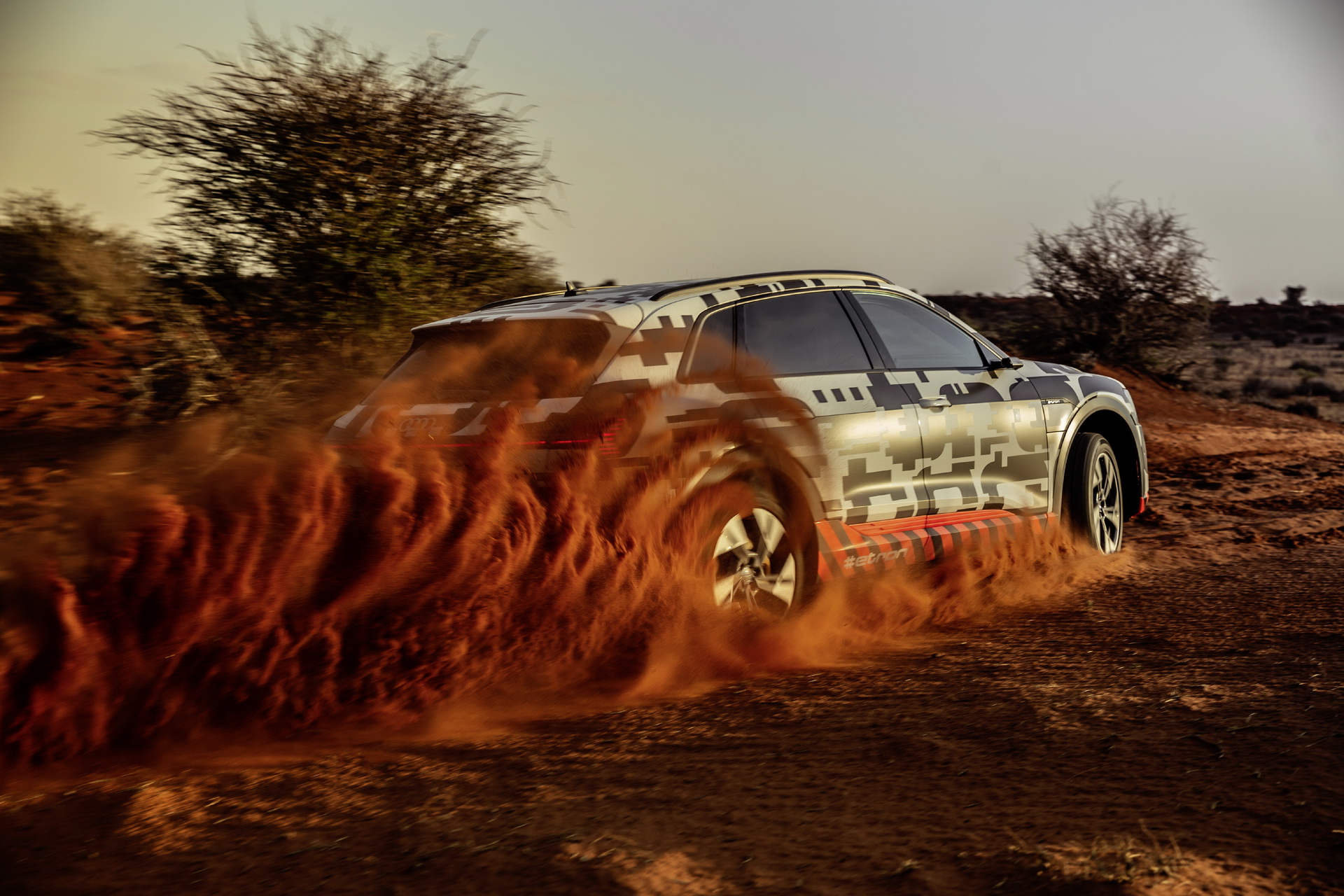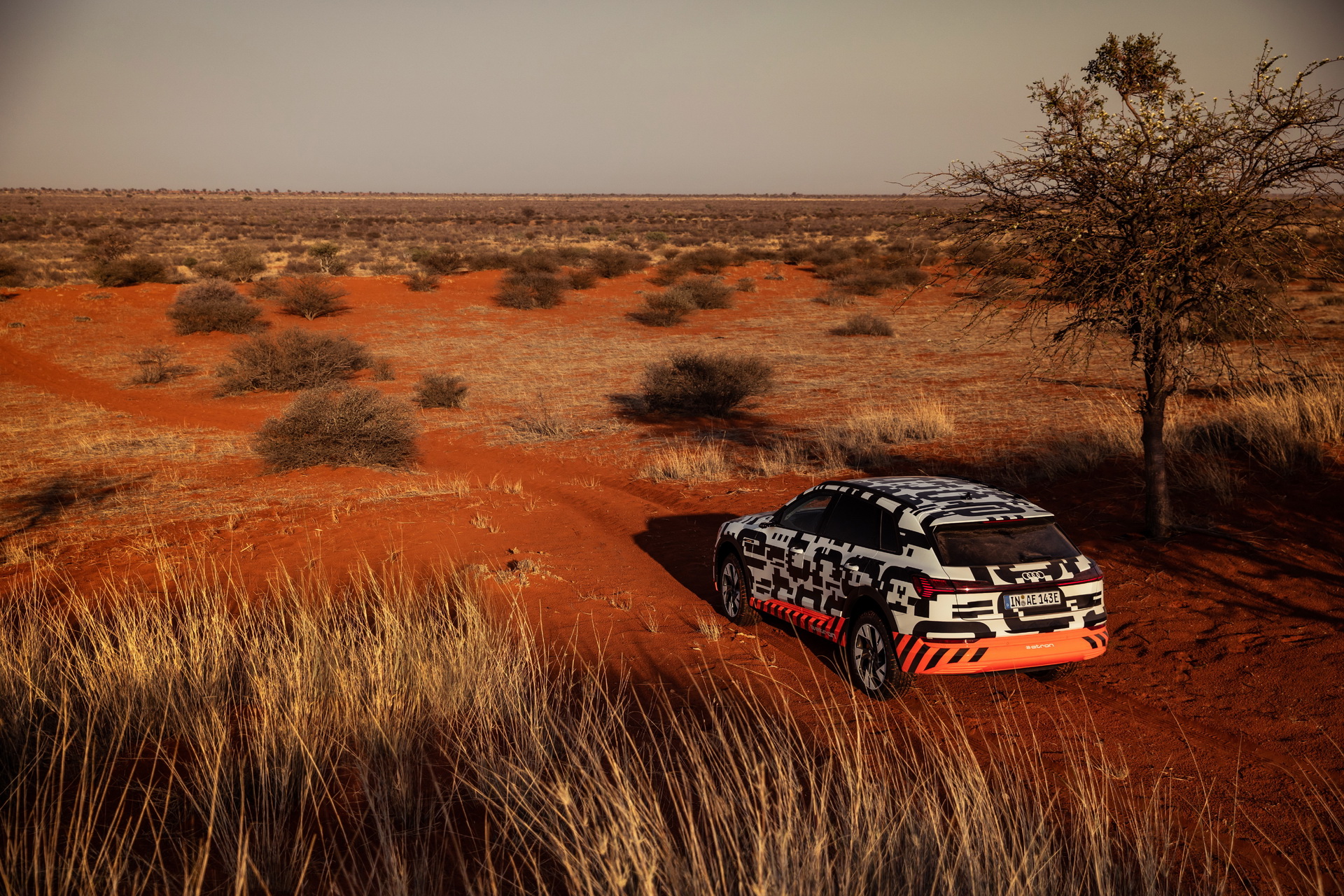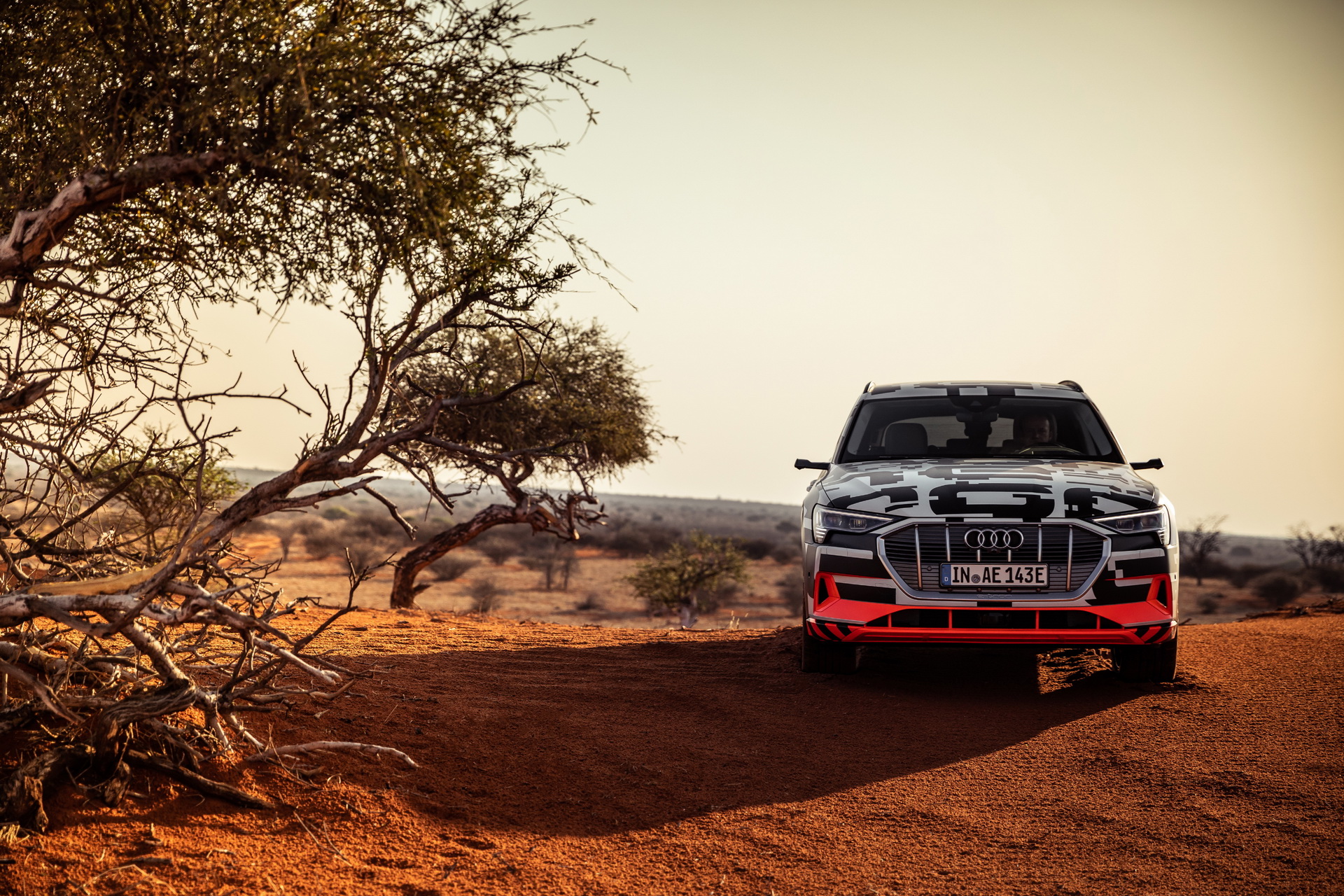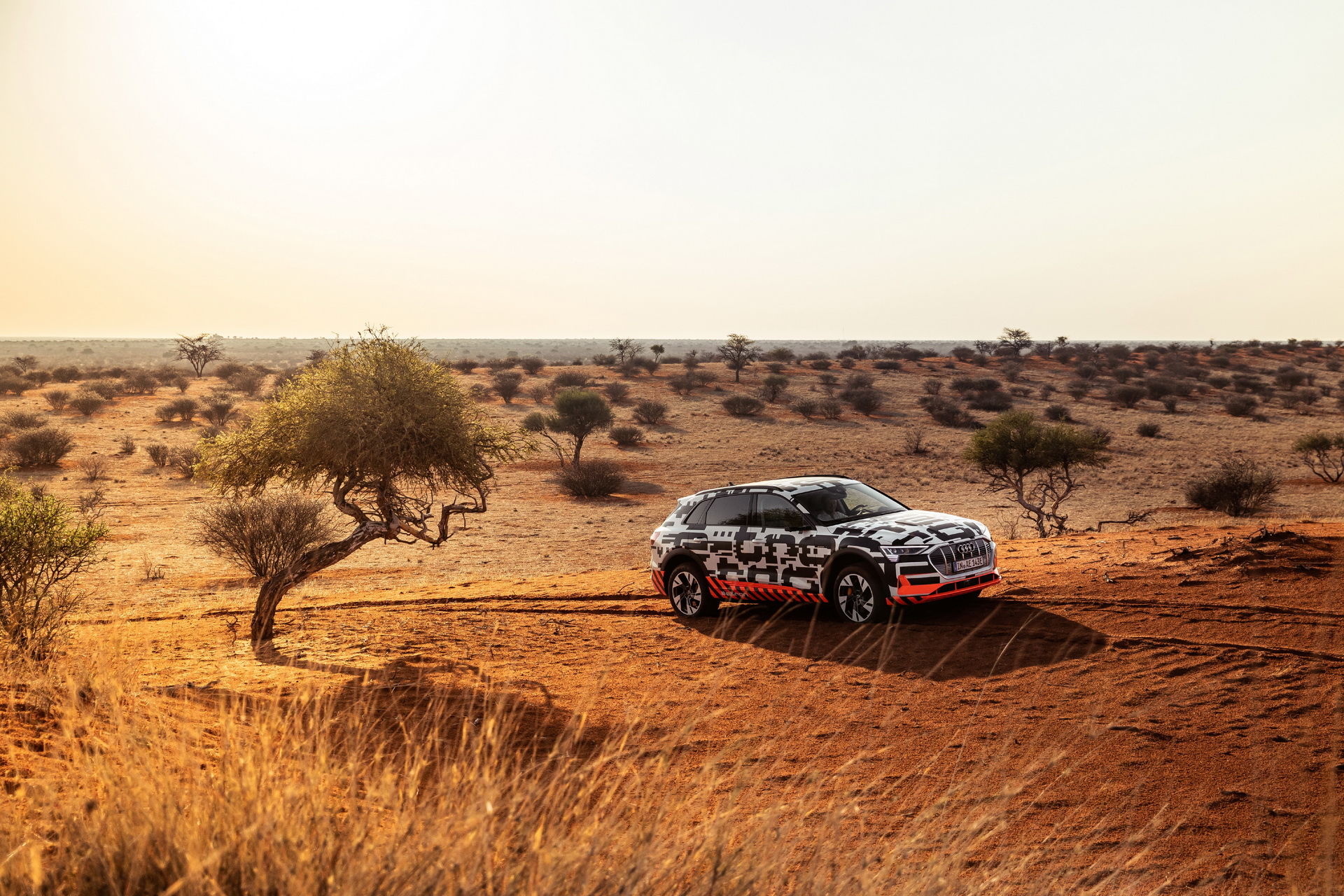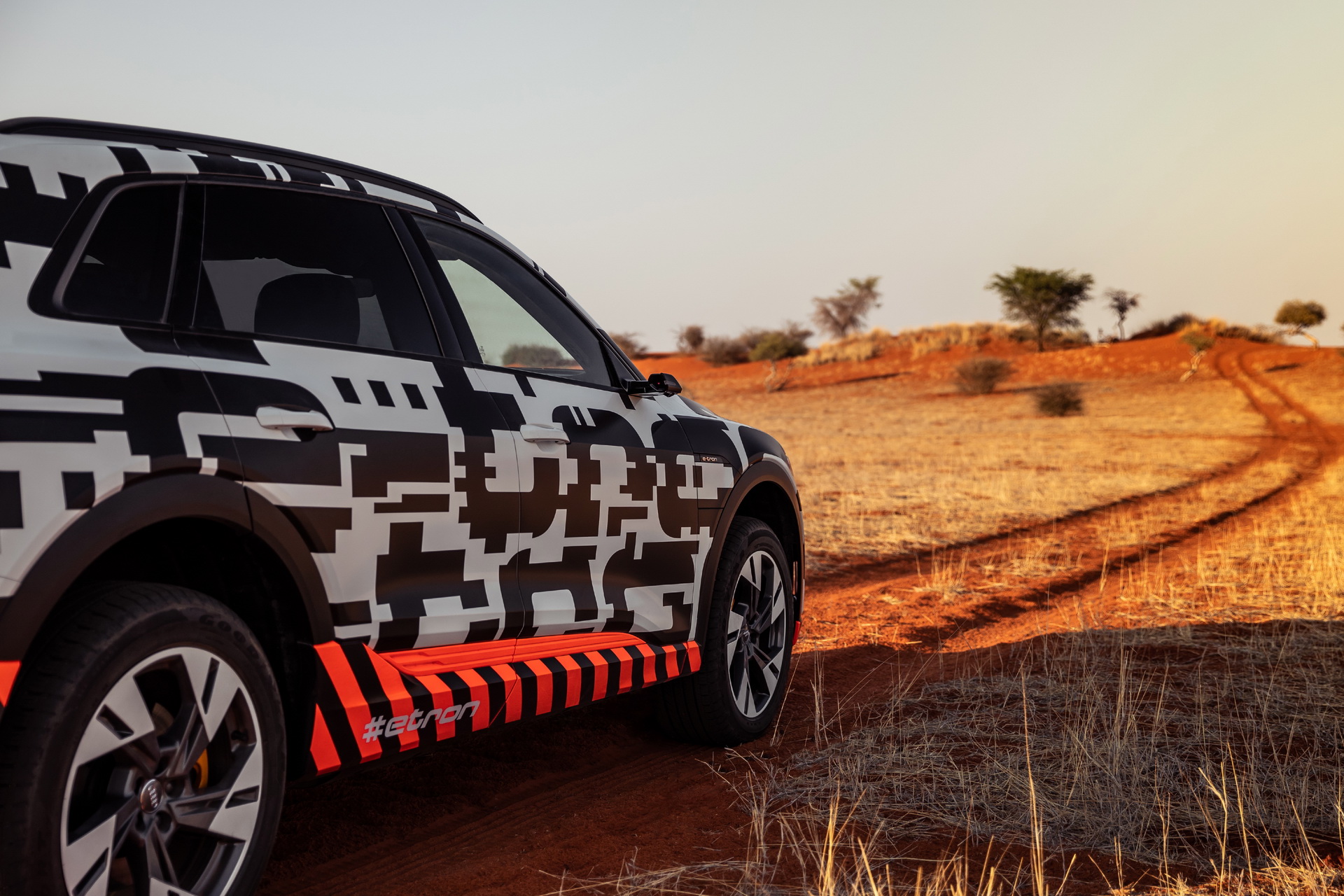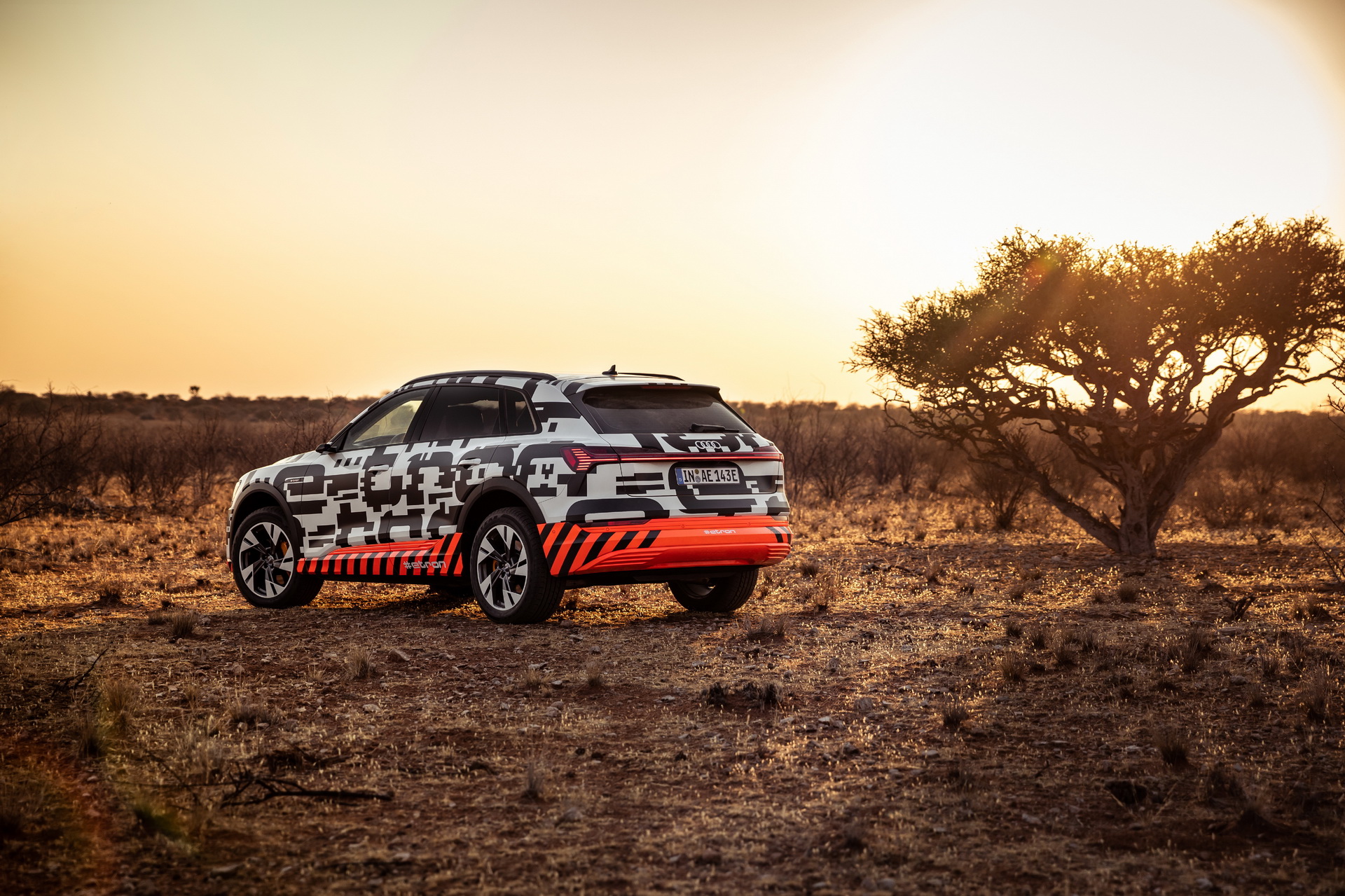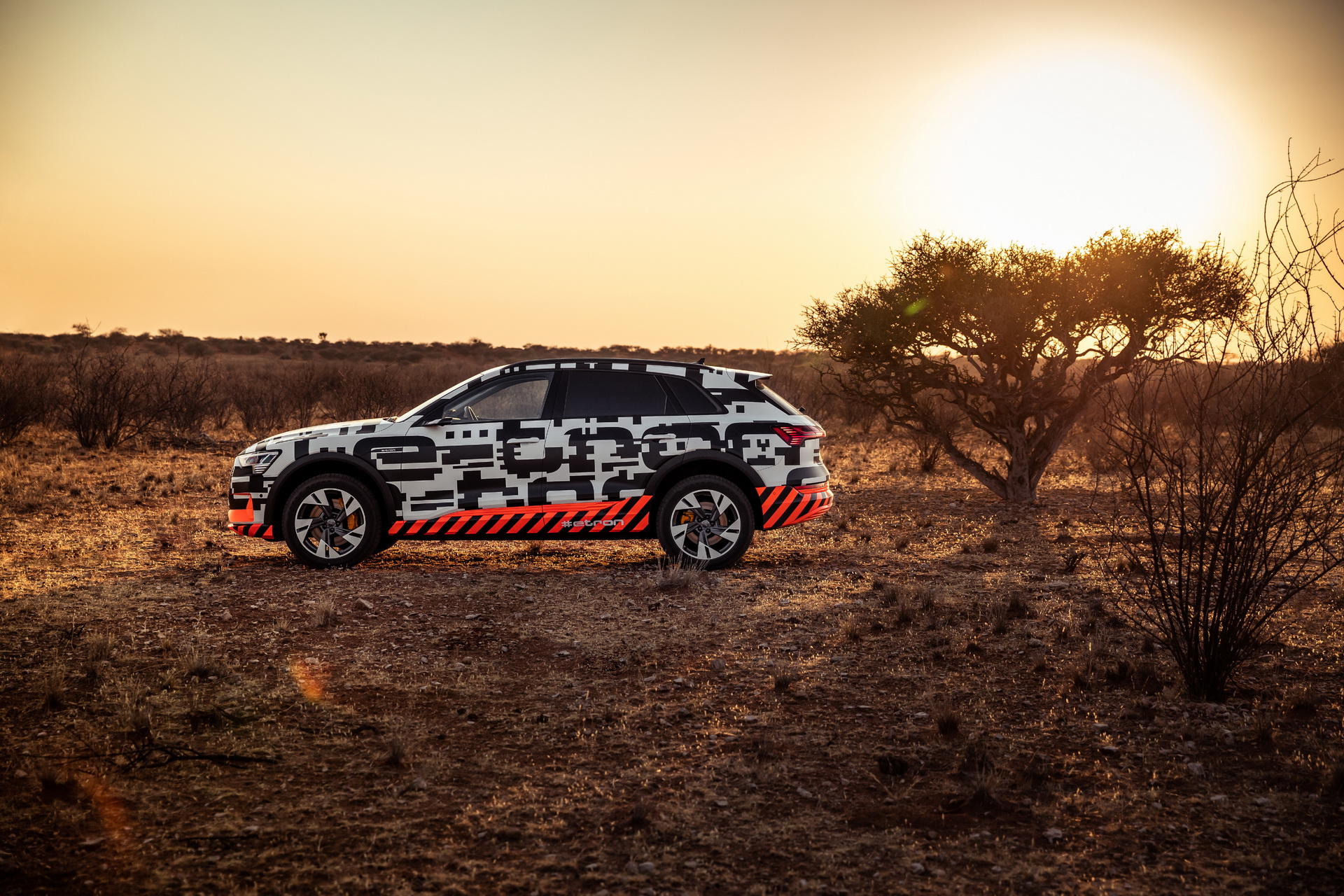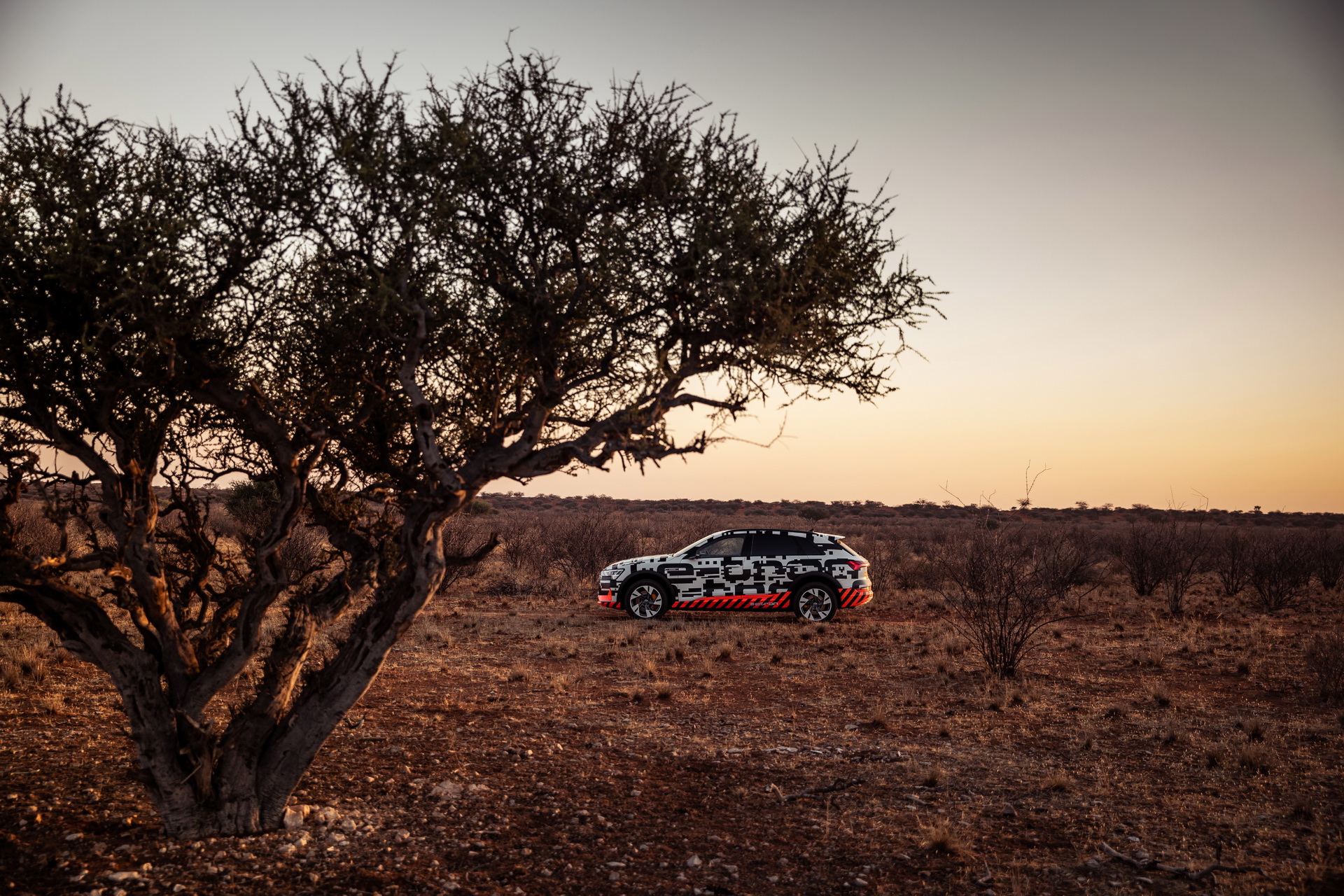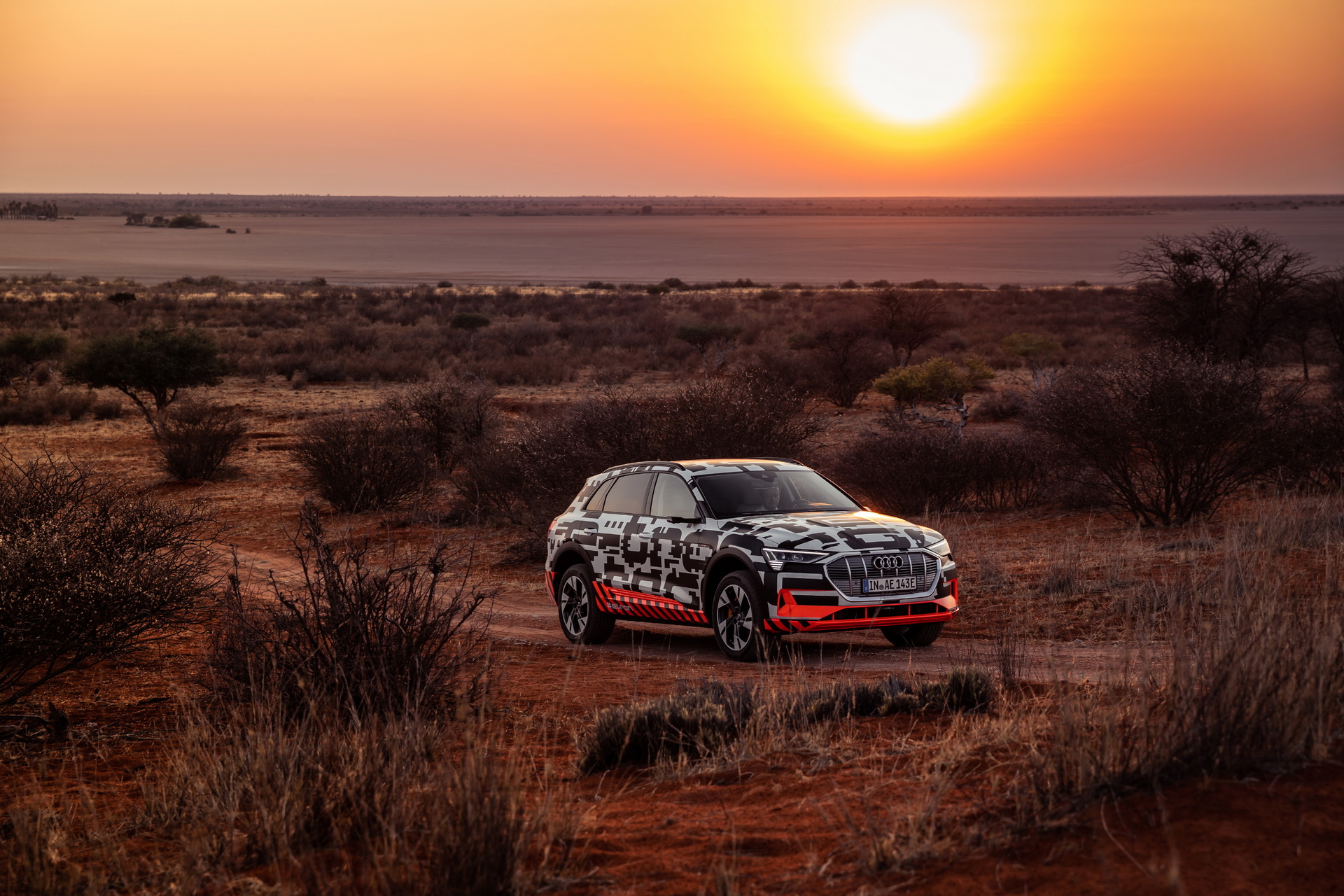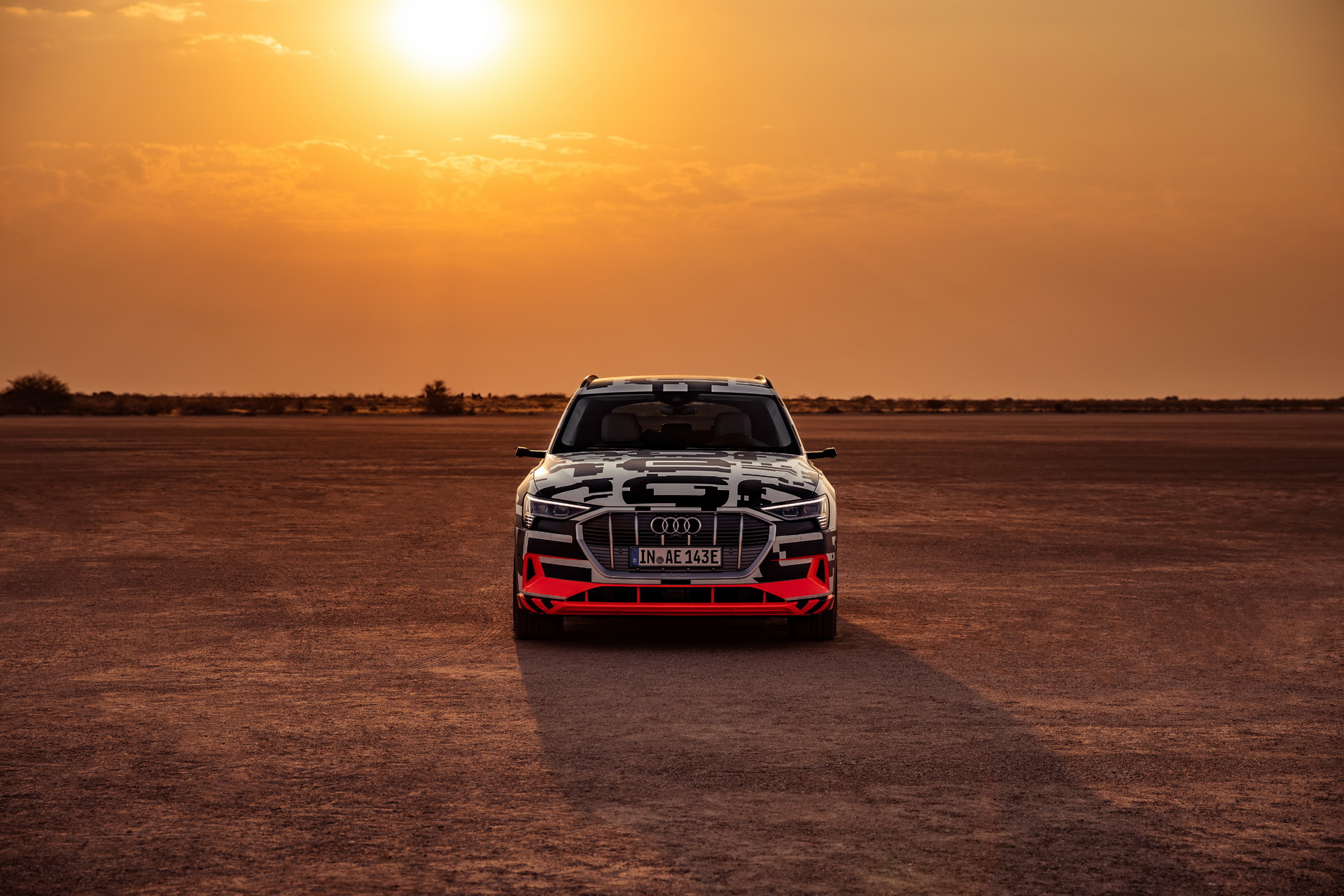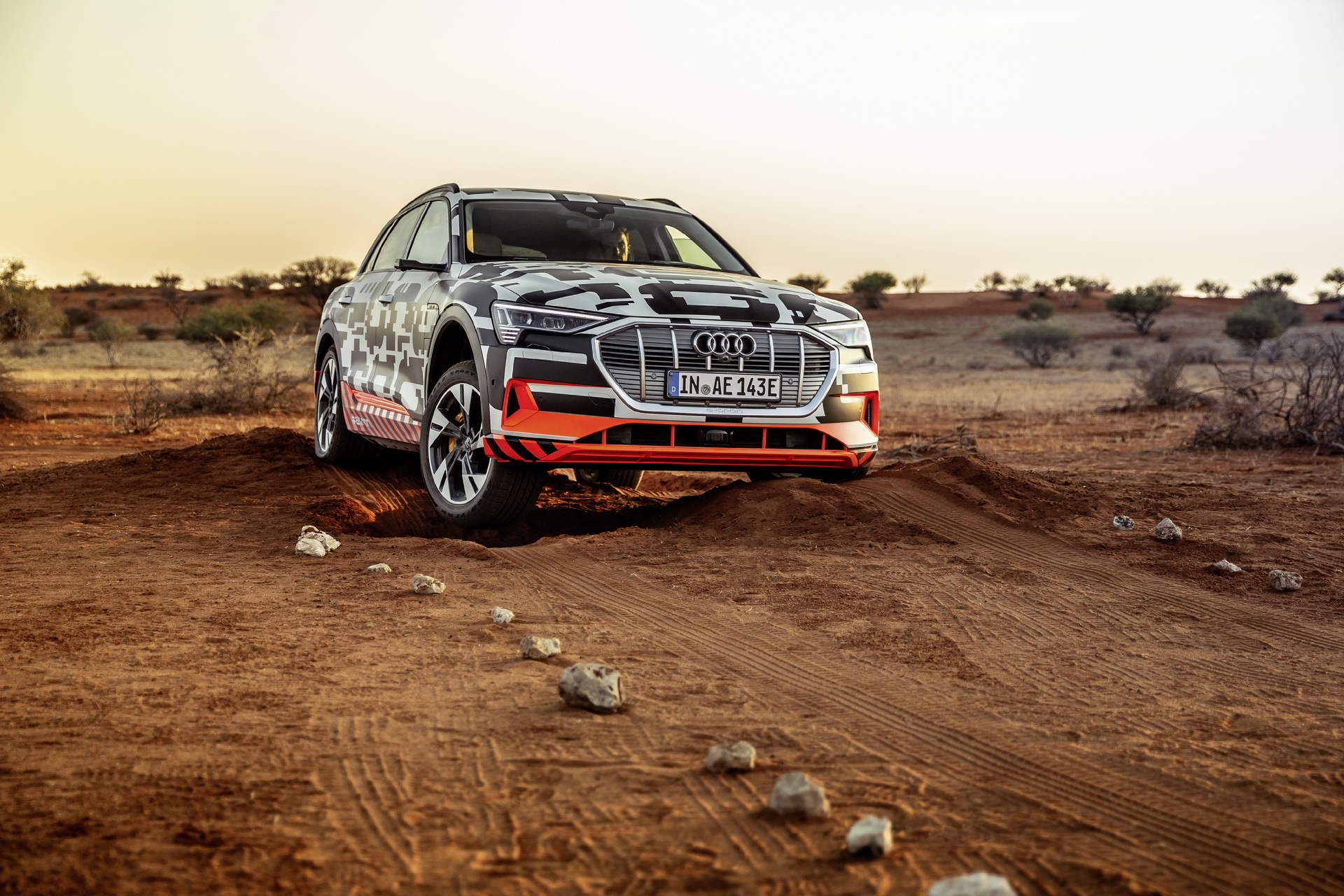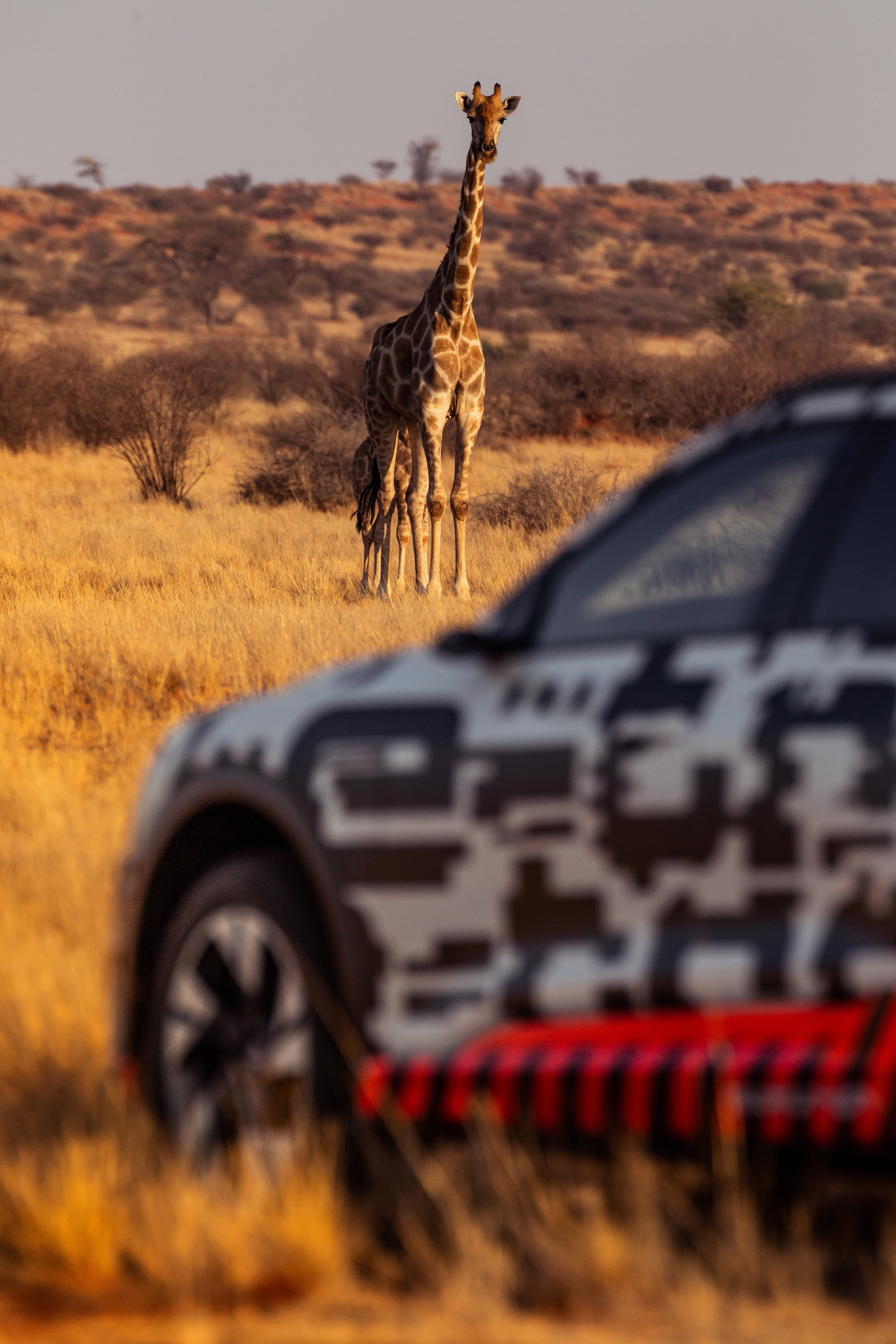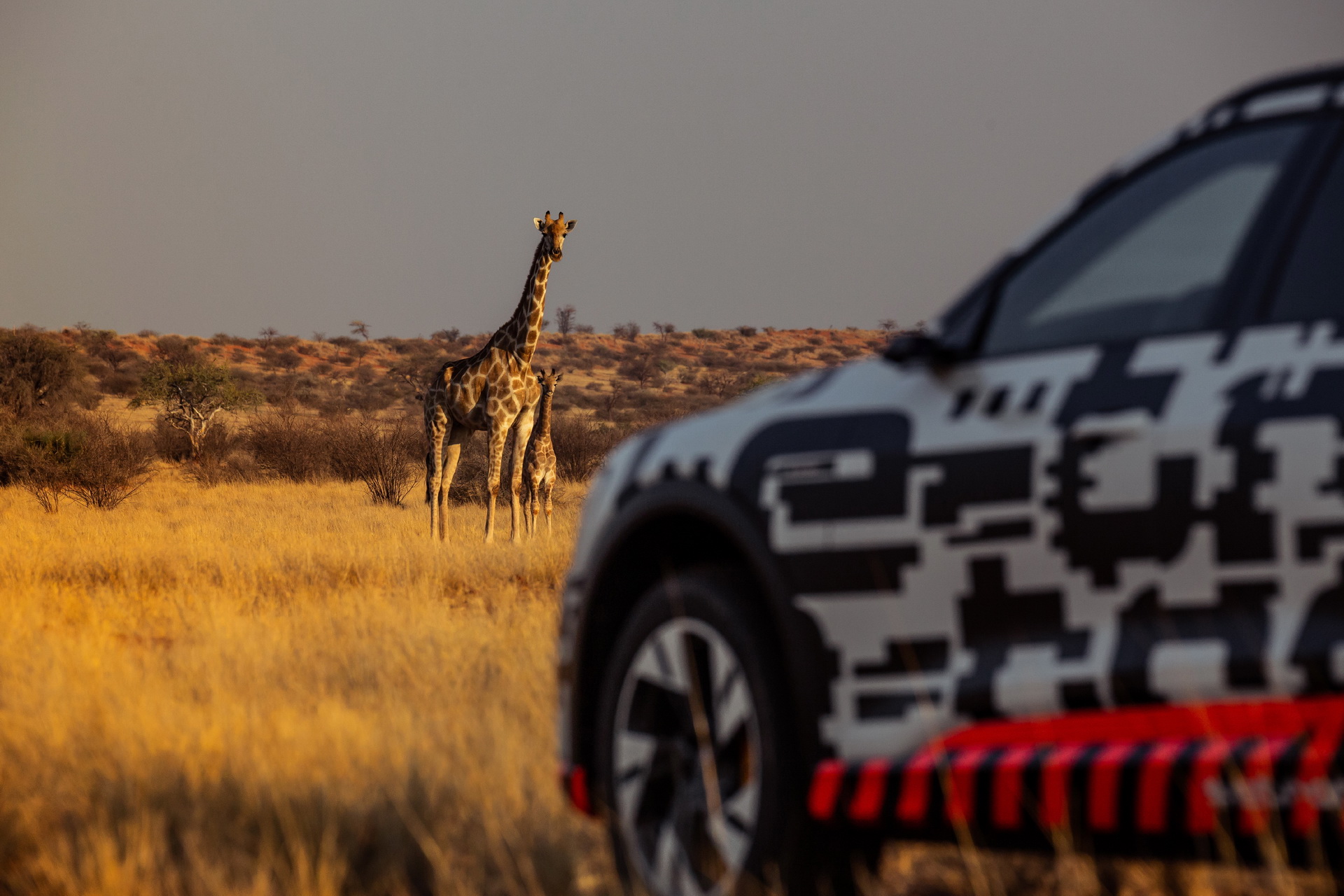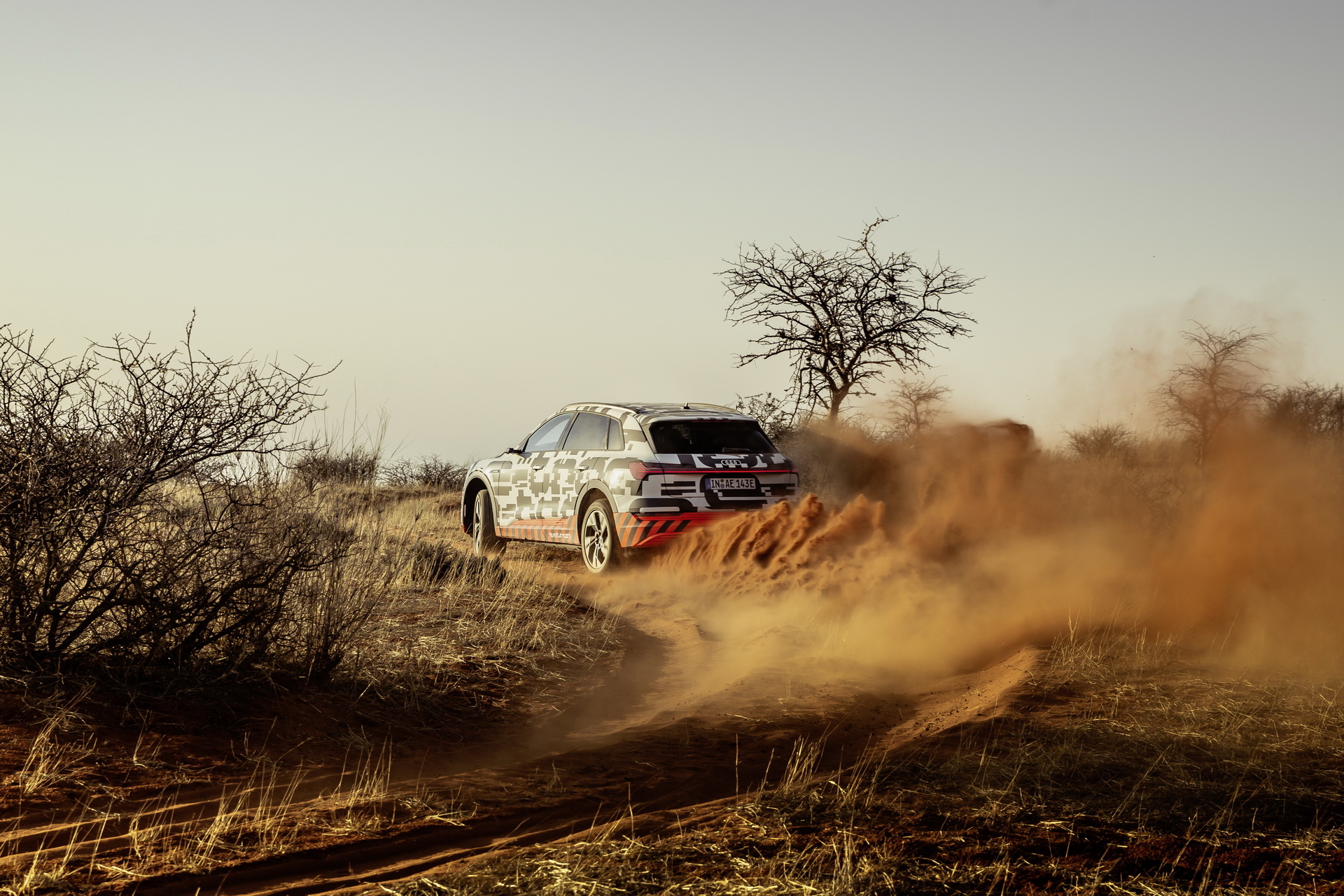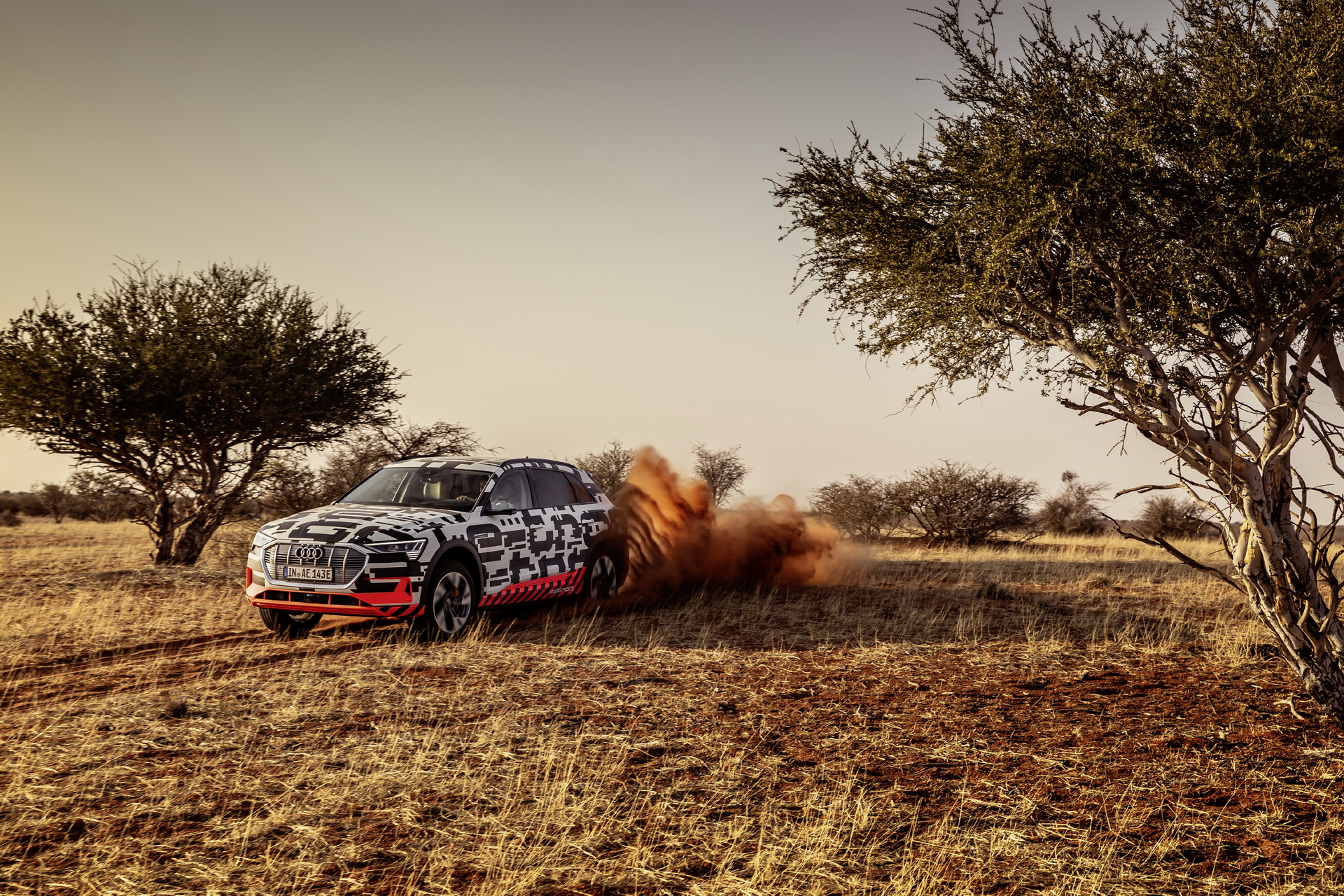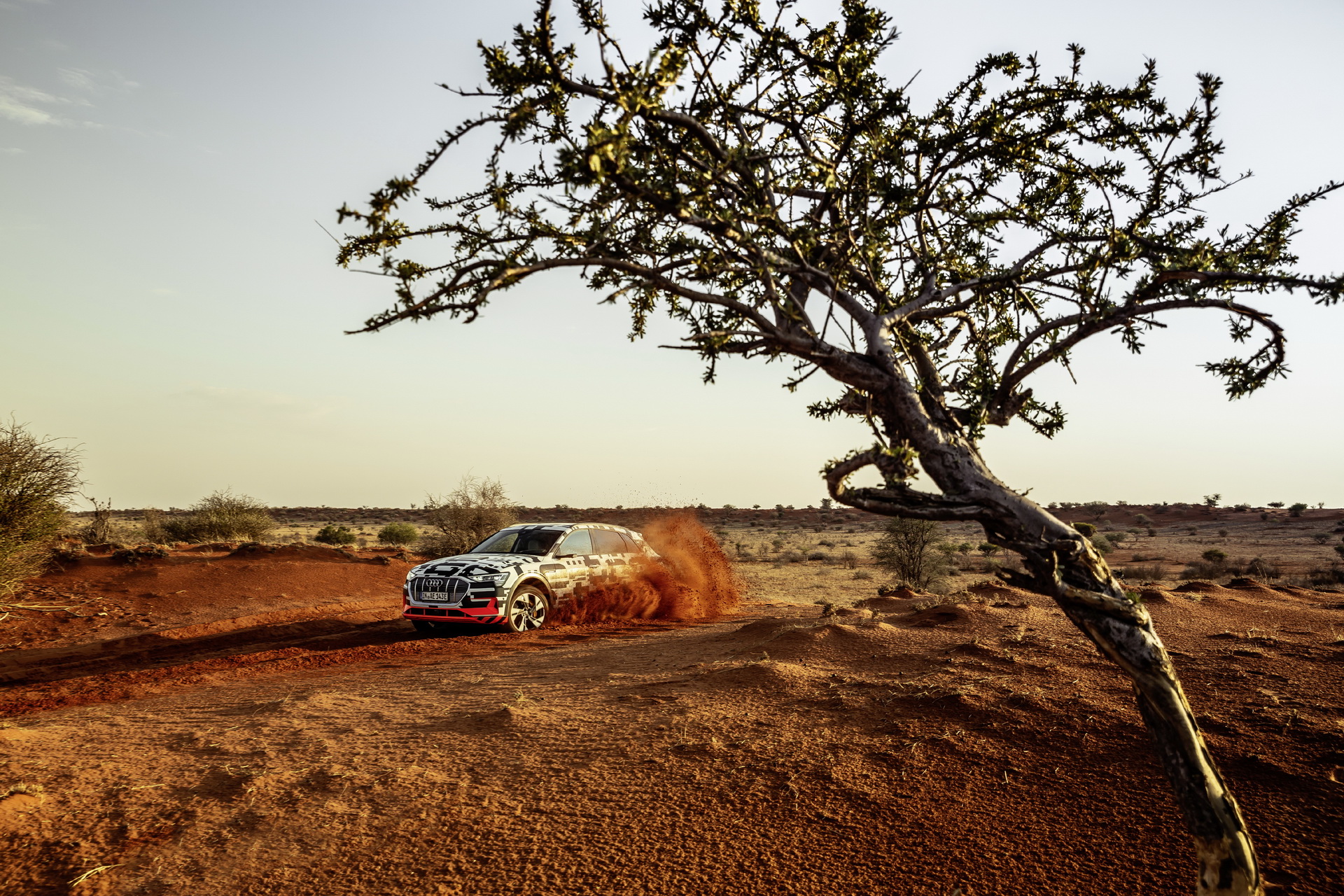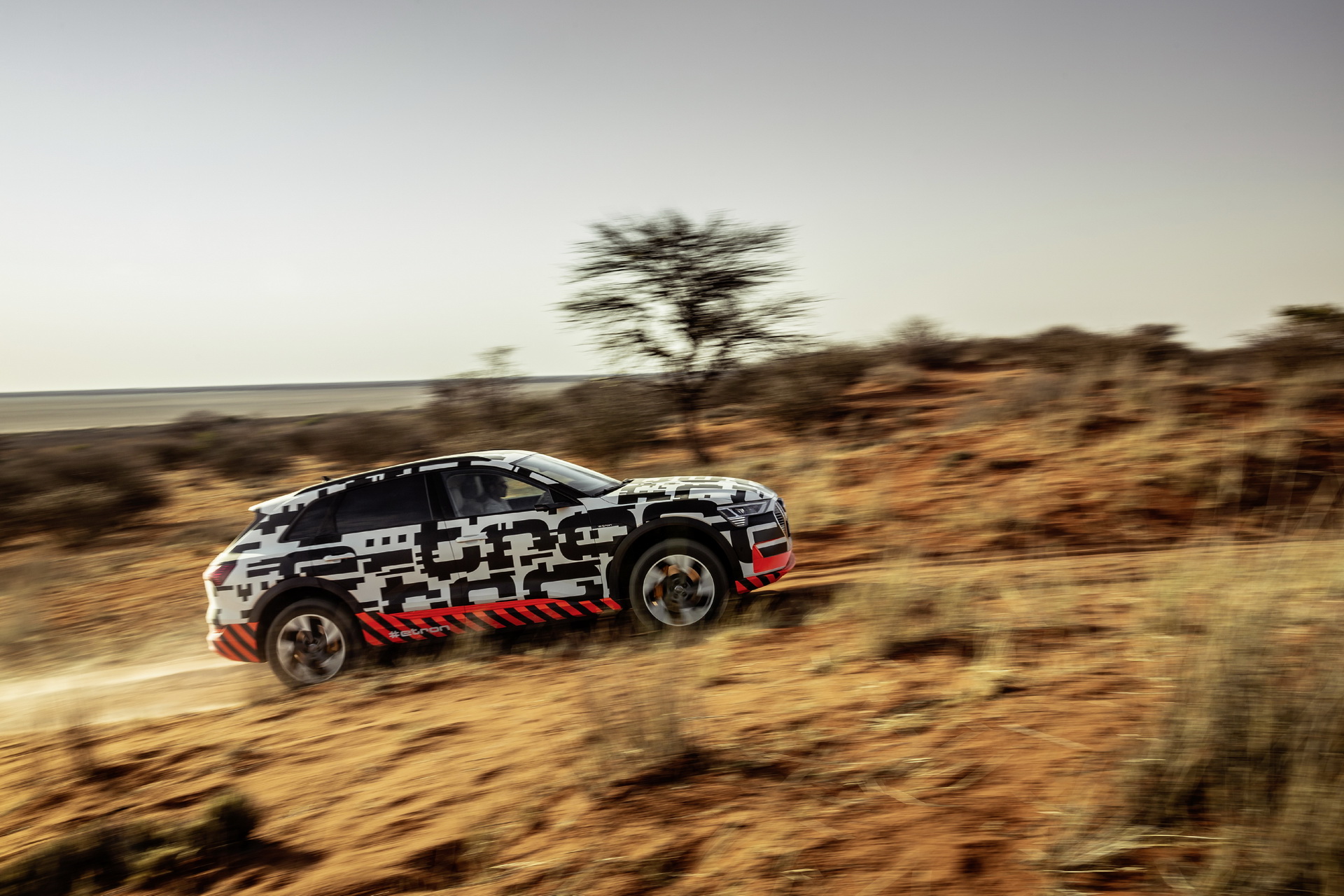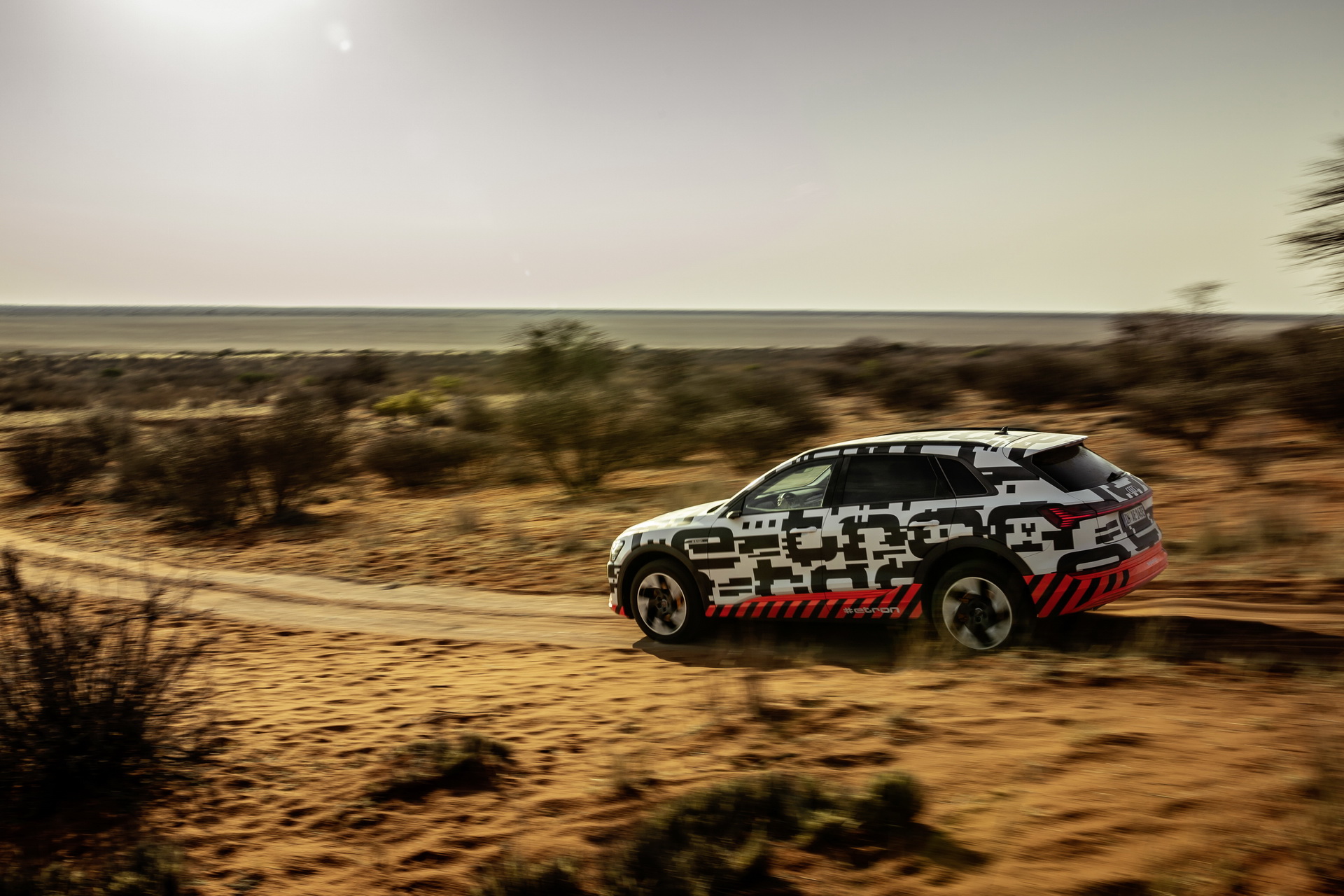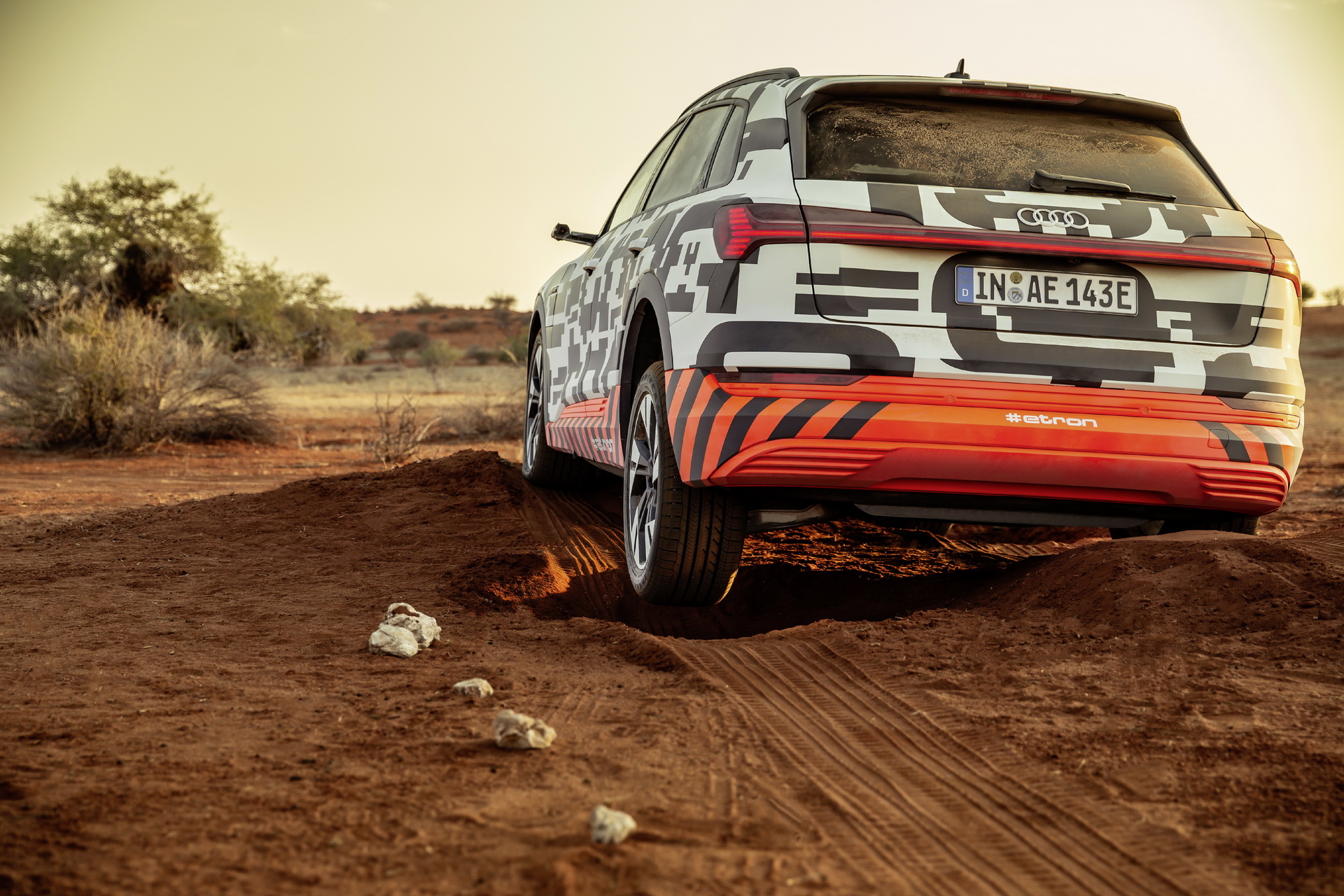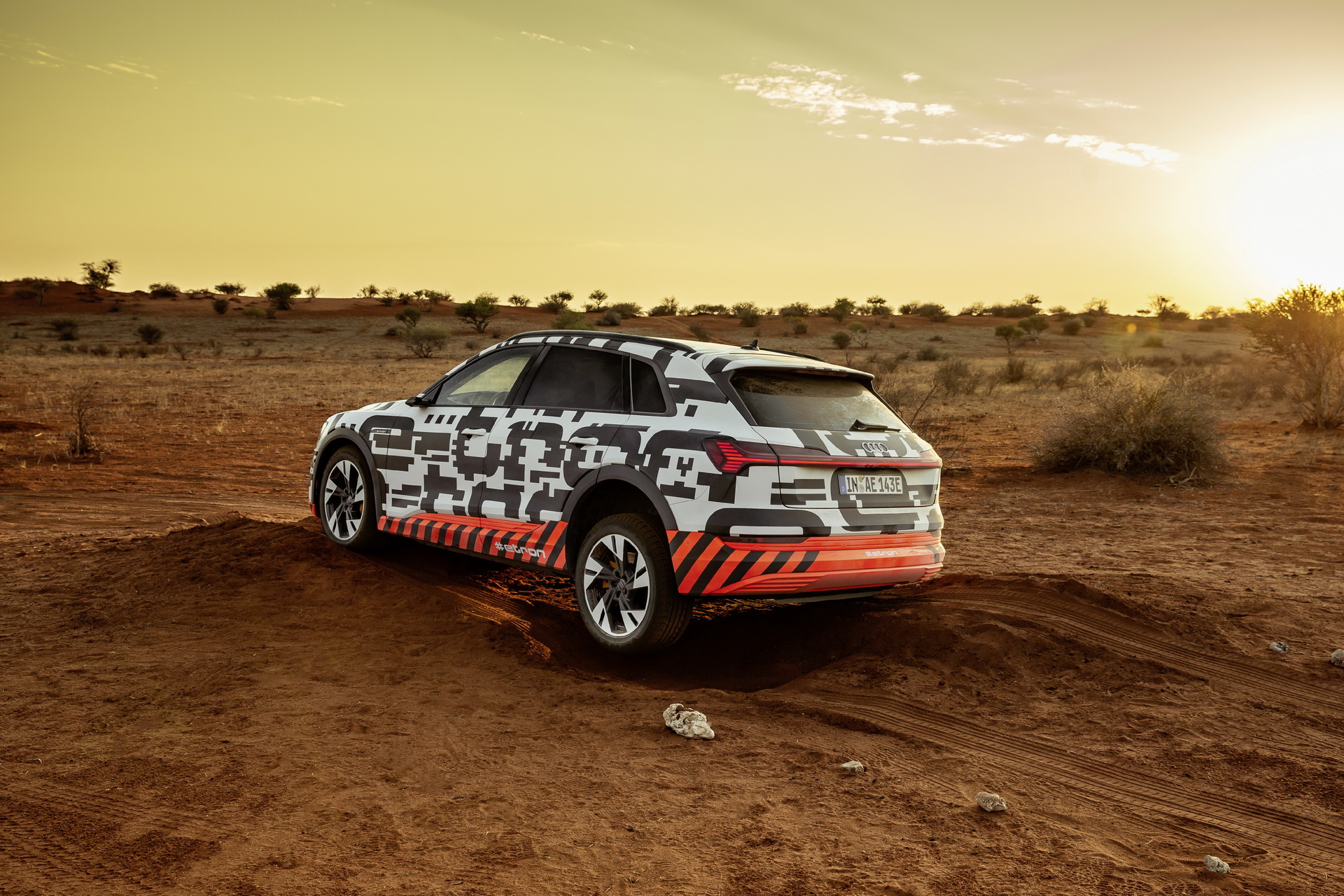The new E-Tron SUV, Audi’s first take on a series-production all-electric vehicle, is about to hit the market and the German car maker promises it will offer impressive dynamics in addition to zero-emissions commuting.
To demonstrate how capable the new E-Tron is, Audi took a few near-production prototypes on a dried-out salt lake located on the edge of the Kalahari desert. The porous, hard gravel surface provides apparently the perfect grip conditions for Audi to demonstrate the electric Quattro all-wheel drive of the E-Tron and do some drifting while it’s there.
Audi says that the E-Tron’s electric all-wheel drive and suspension systems are interconnected, including the Audi Drive Select, the electronic stabilization control and the air suspension.
The electric Quattro system features a new level of continuous and variable regulation of the torque between the two axles, taking just 30 milliseconds between detecting the driving situation and delivering the required torque from the electric motors.
Audi has integrated the handling controller of the Quattro drive and the wheel-selective torque control within the central suspension control unit for the first time, taking full advantage of the E-tron’s electric powertrain. If the system detects understeer, it gently brakes the inside wheels and directs torque to the outside, allowing the car to return to the proper trajectory.
Wheel slip is controlled 50 times faster than before, directly from the power electronics of the electric motors. The ESC features four-stage function modes, allowing the driver to choose his optimal setting depending on driving conditions.
The standard dynamic handling system also offers seven profiles to choose from, which in turns adapts the drivetrain, the steering and the air suspension. The new Audi E-Tron can lower itself by 26mm (1.0 inch) on the highway for better aerodynamics while it can lift itself by 50mm (2 inches) when Offroad mode is enabled.
The floor-mounted battery pack is located between the axles, beneath the passenger cell, gving the Audi E-Tron an “almost 50:50” axle load distribution. Audi also claims that when compared to a conventional SUV, the E-Tron offers 45 percent higher torsional rigidity.








